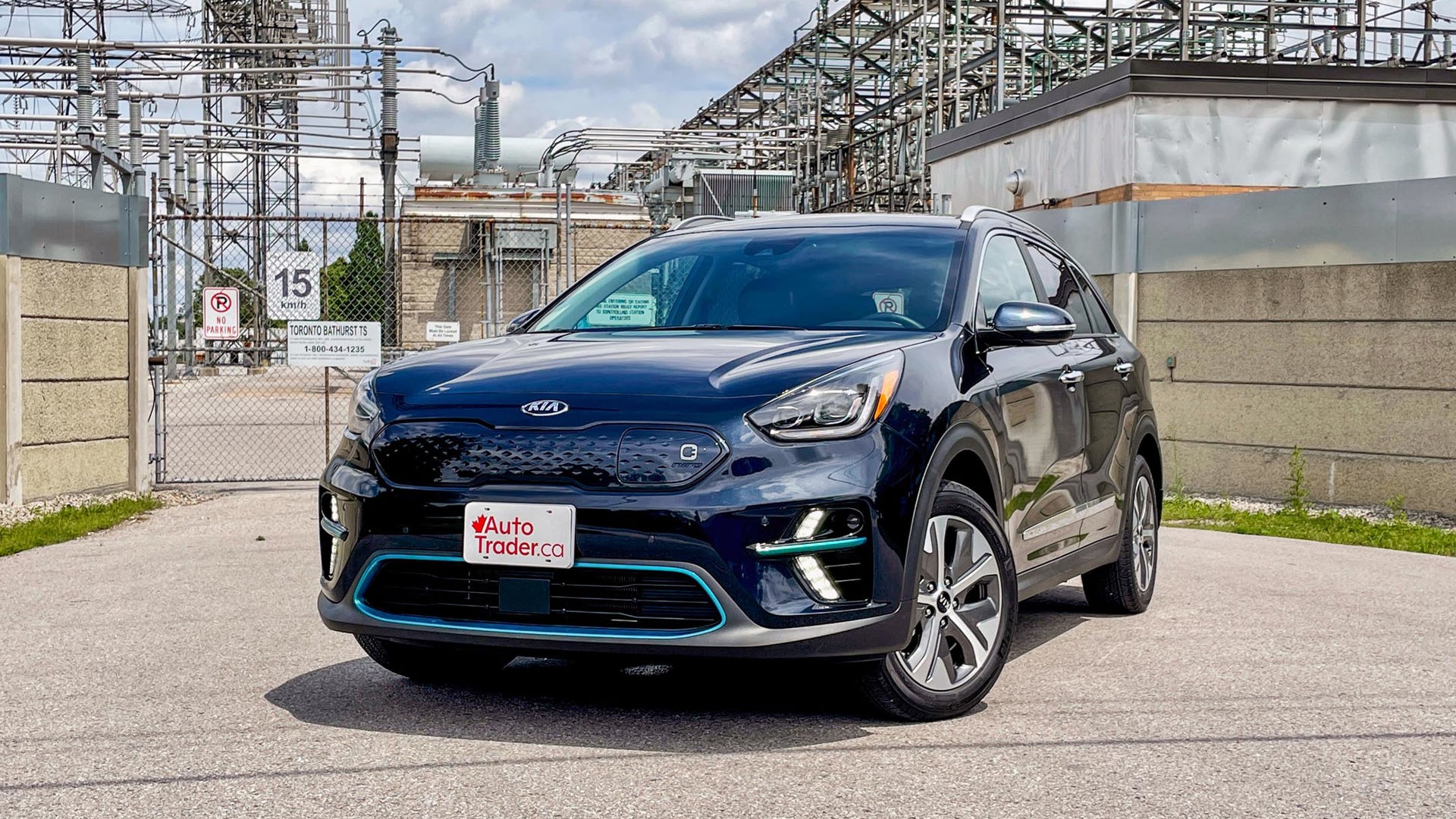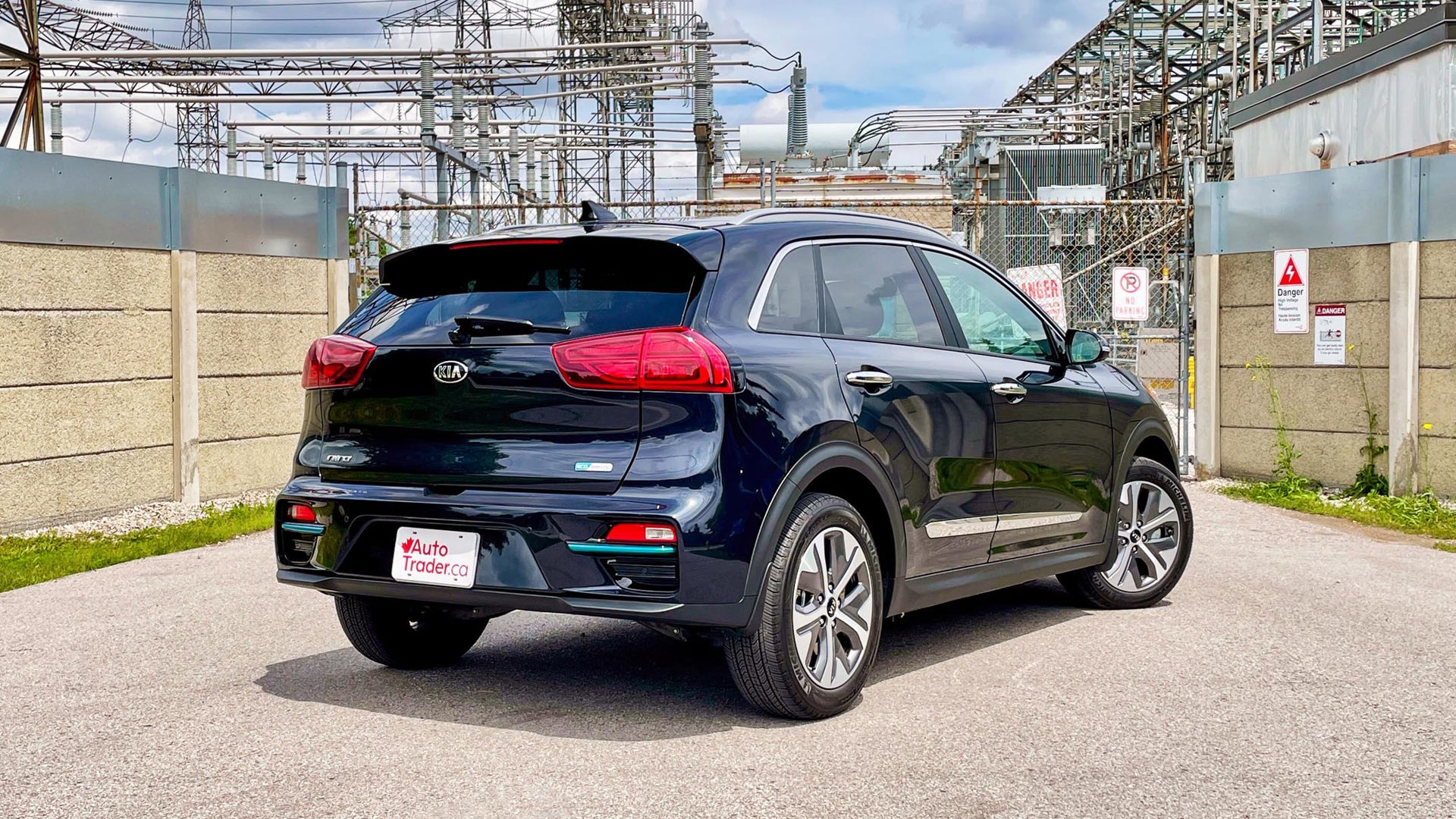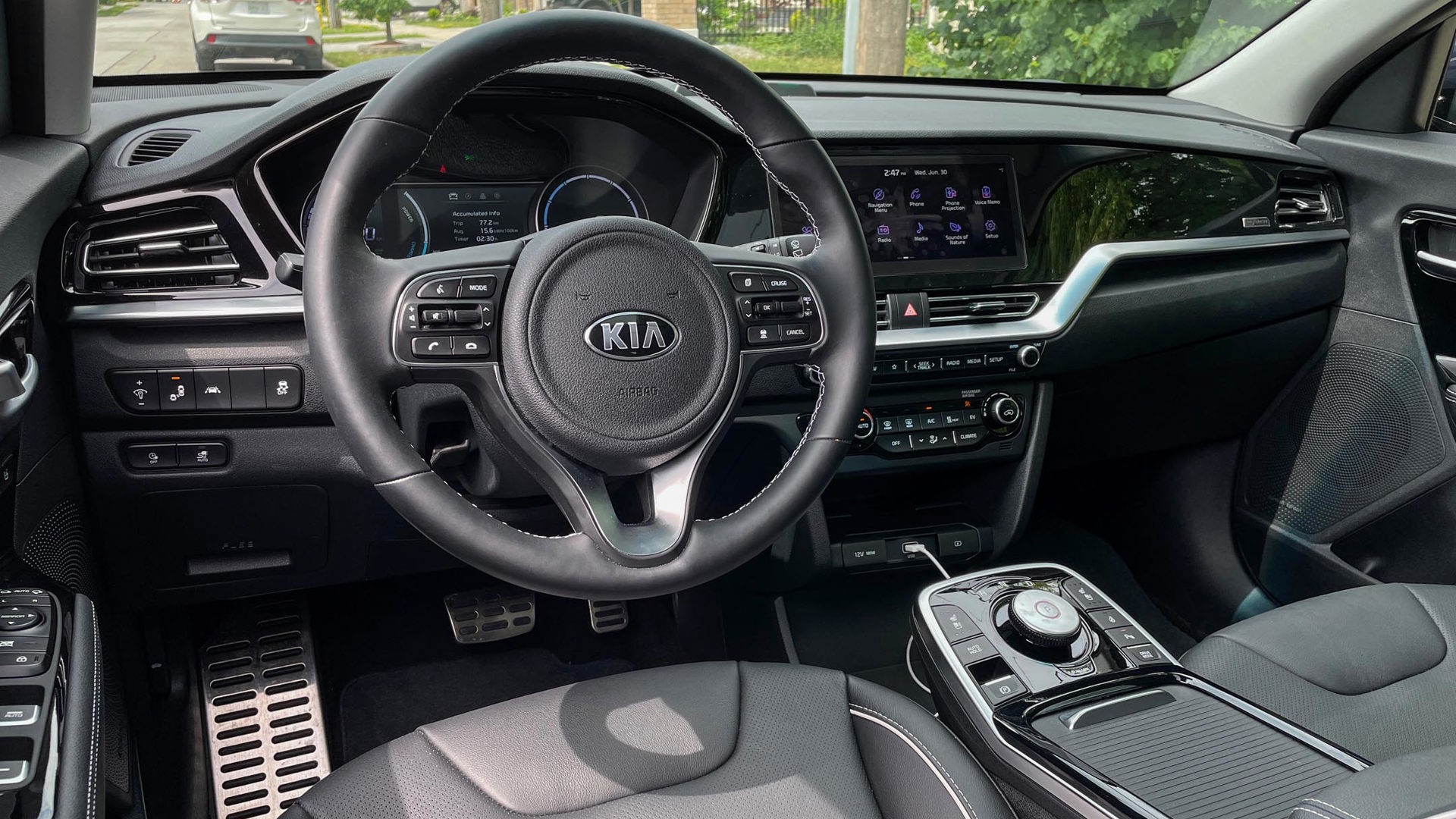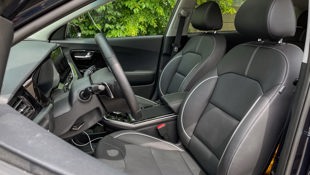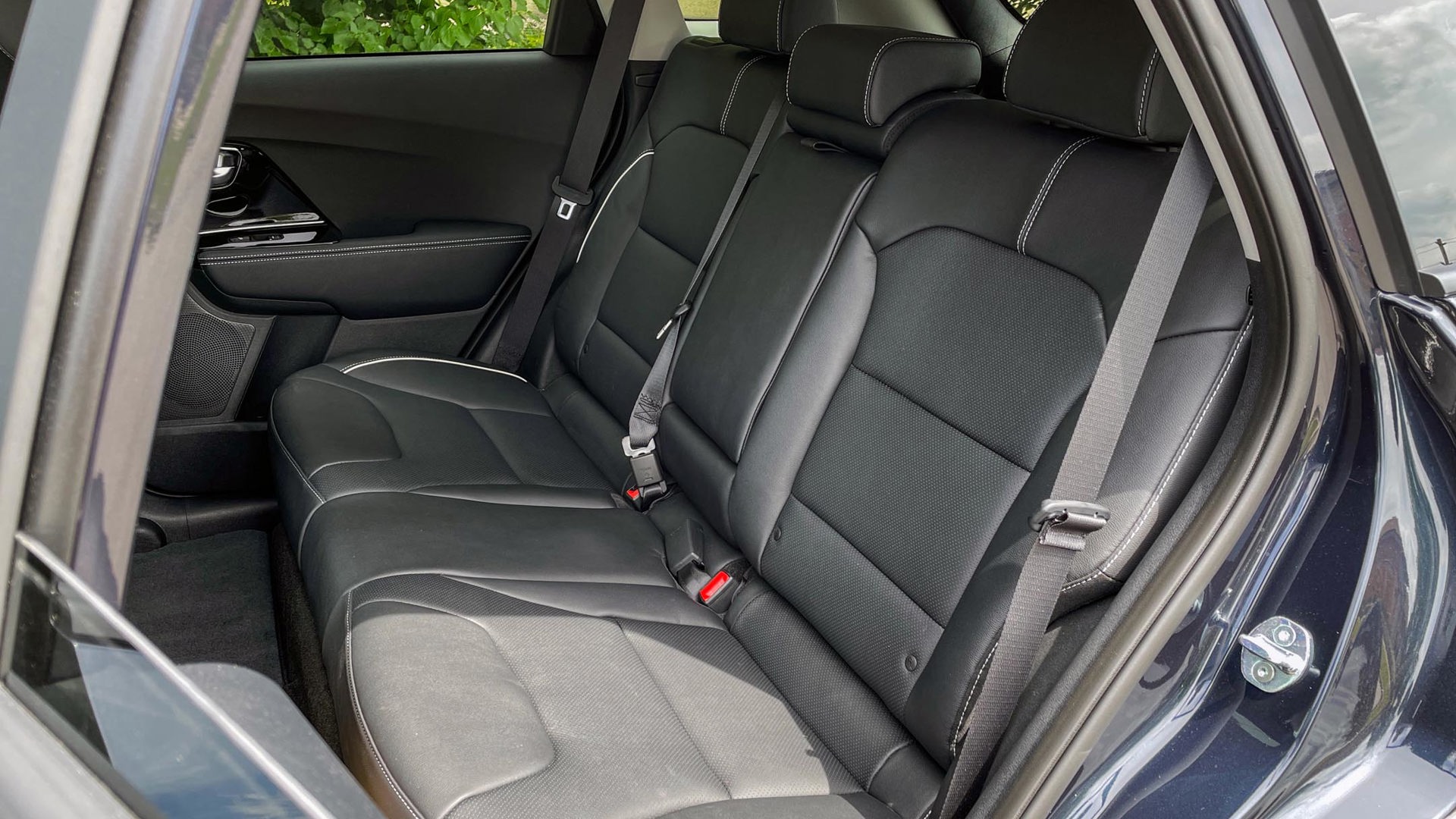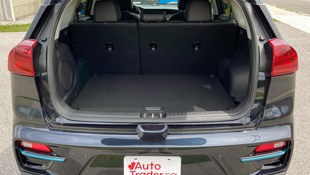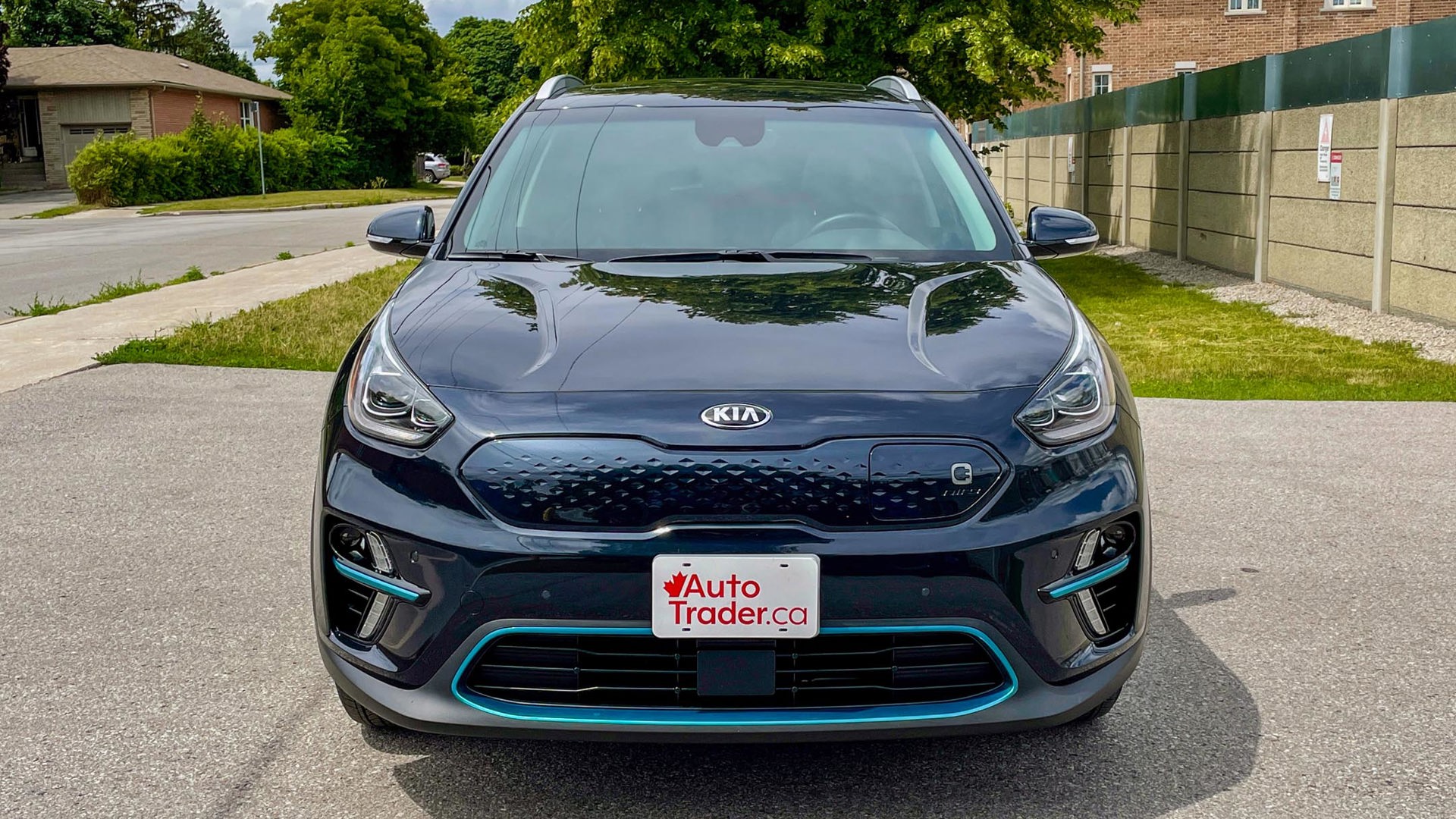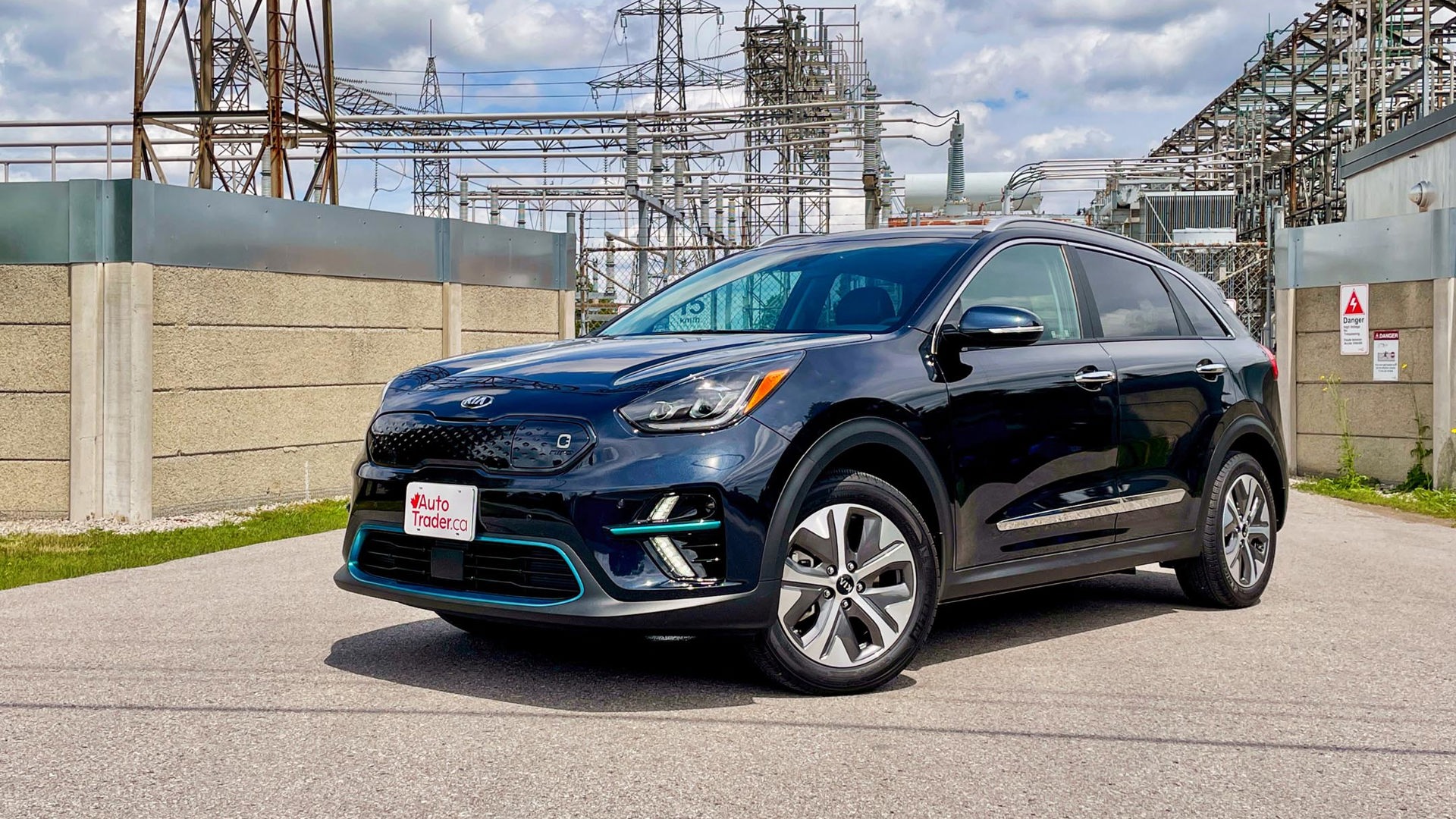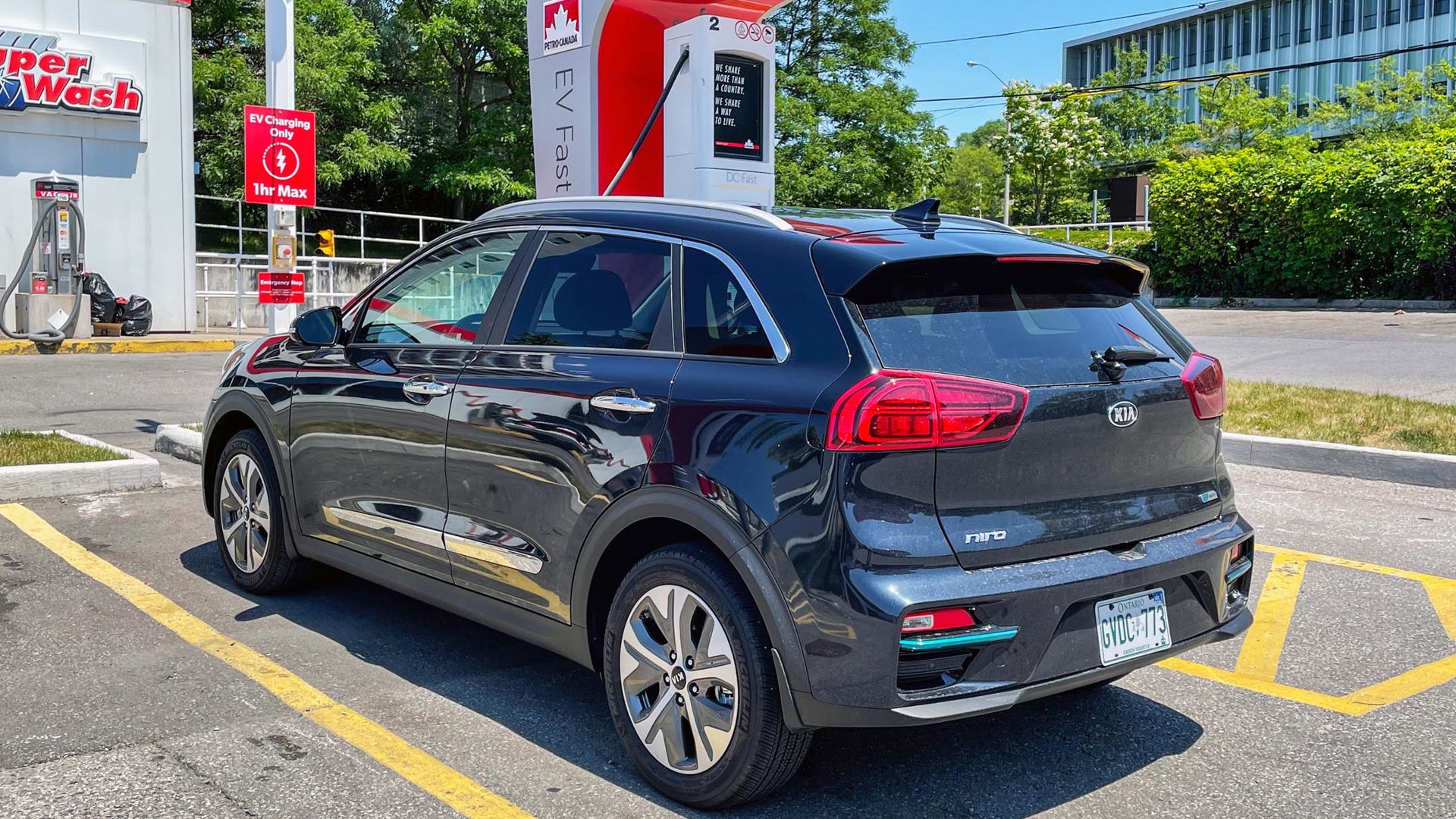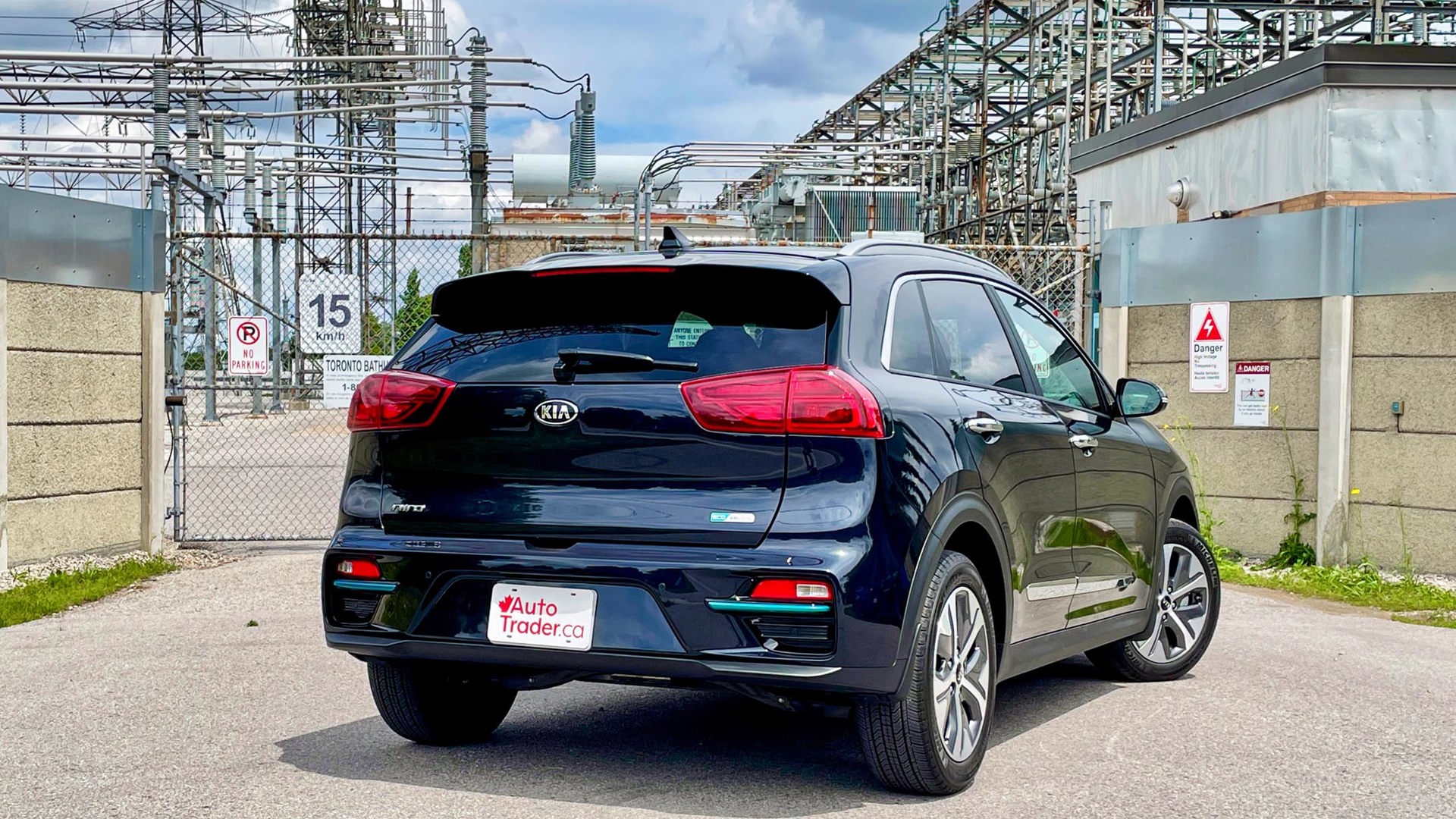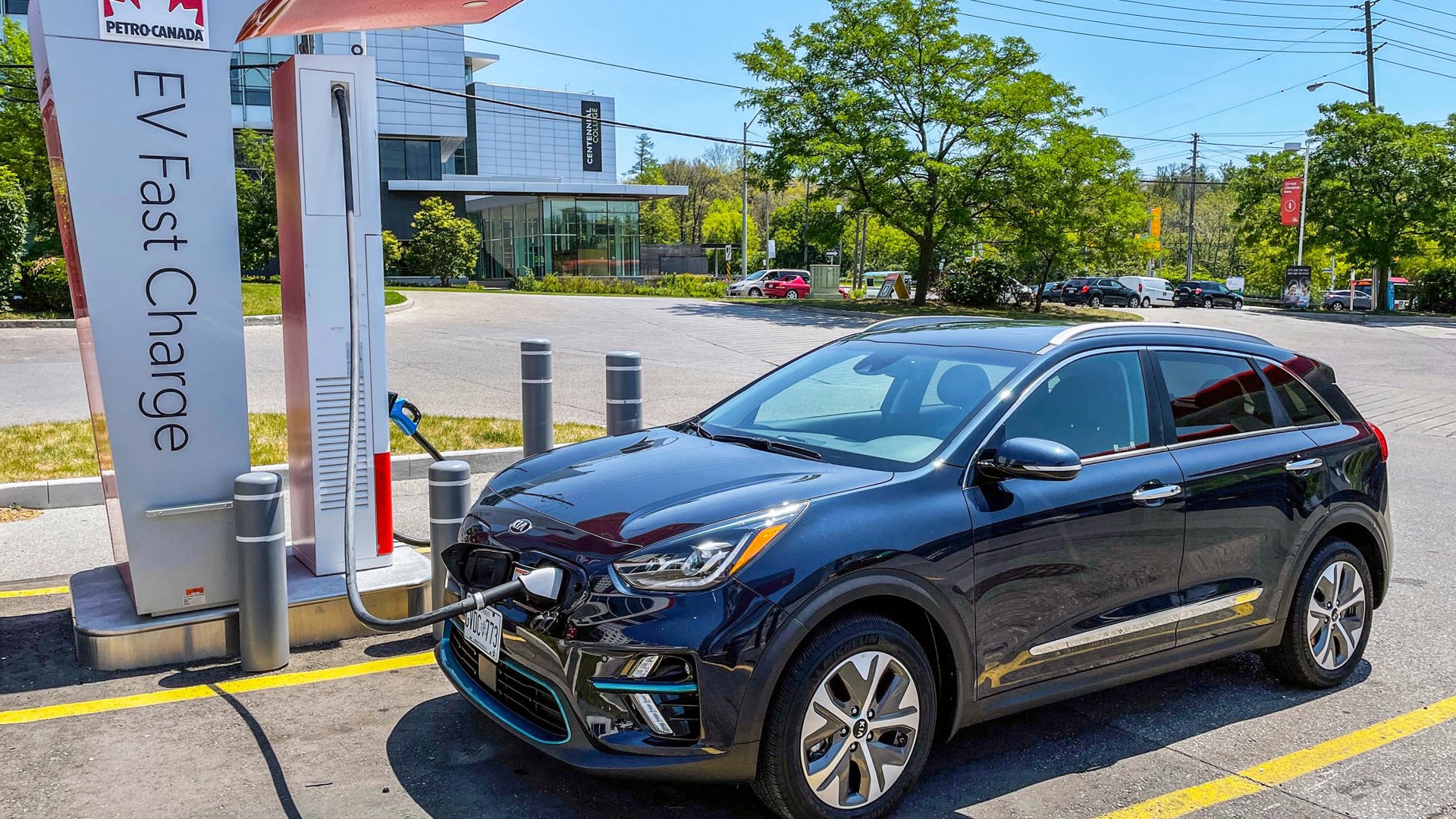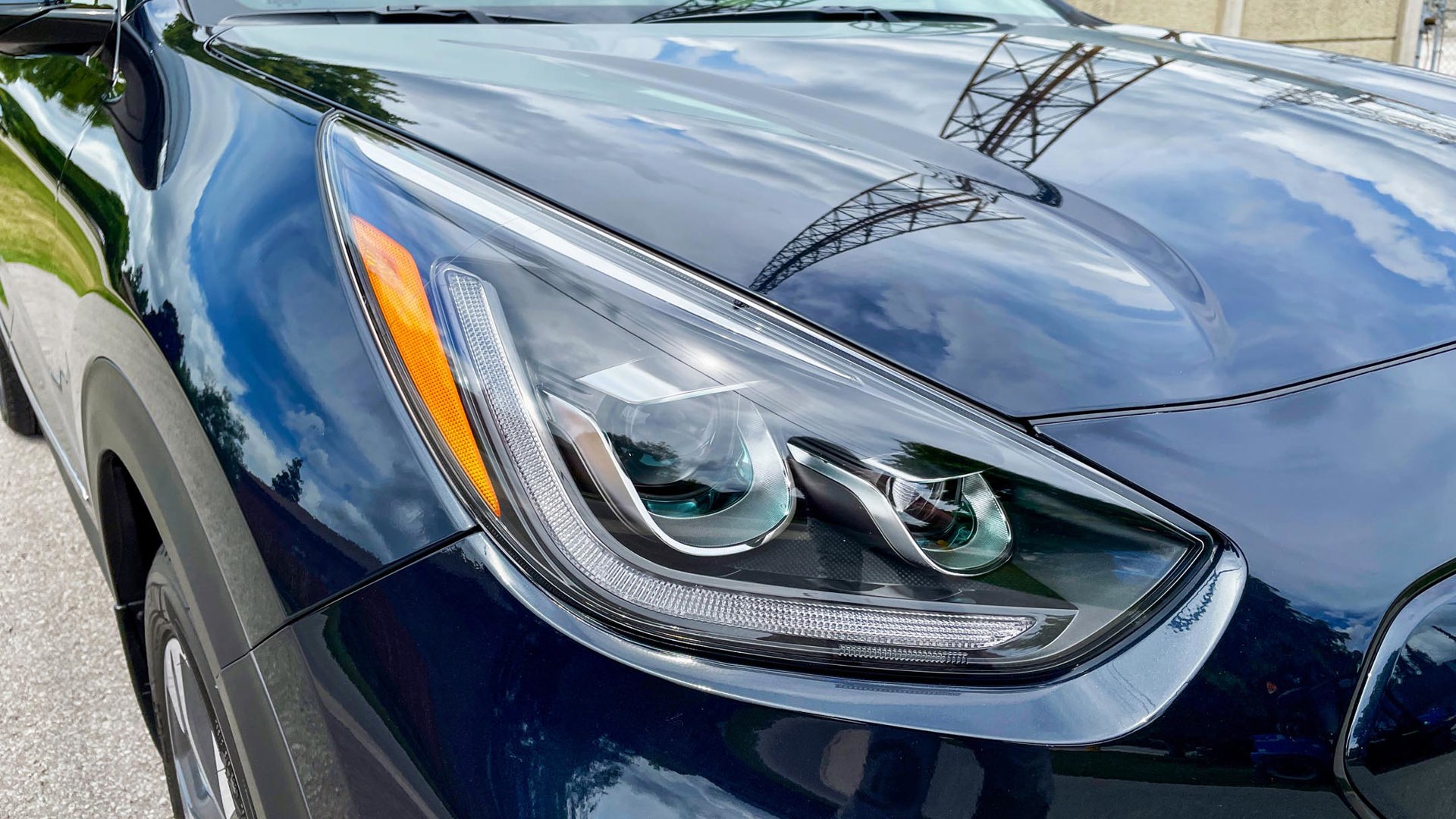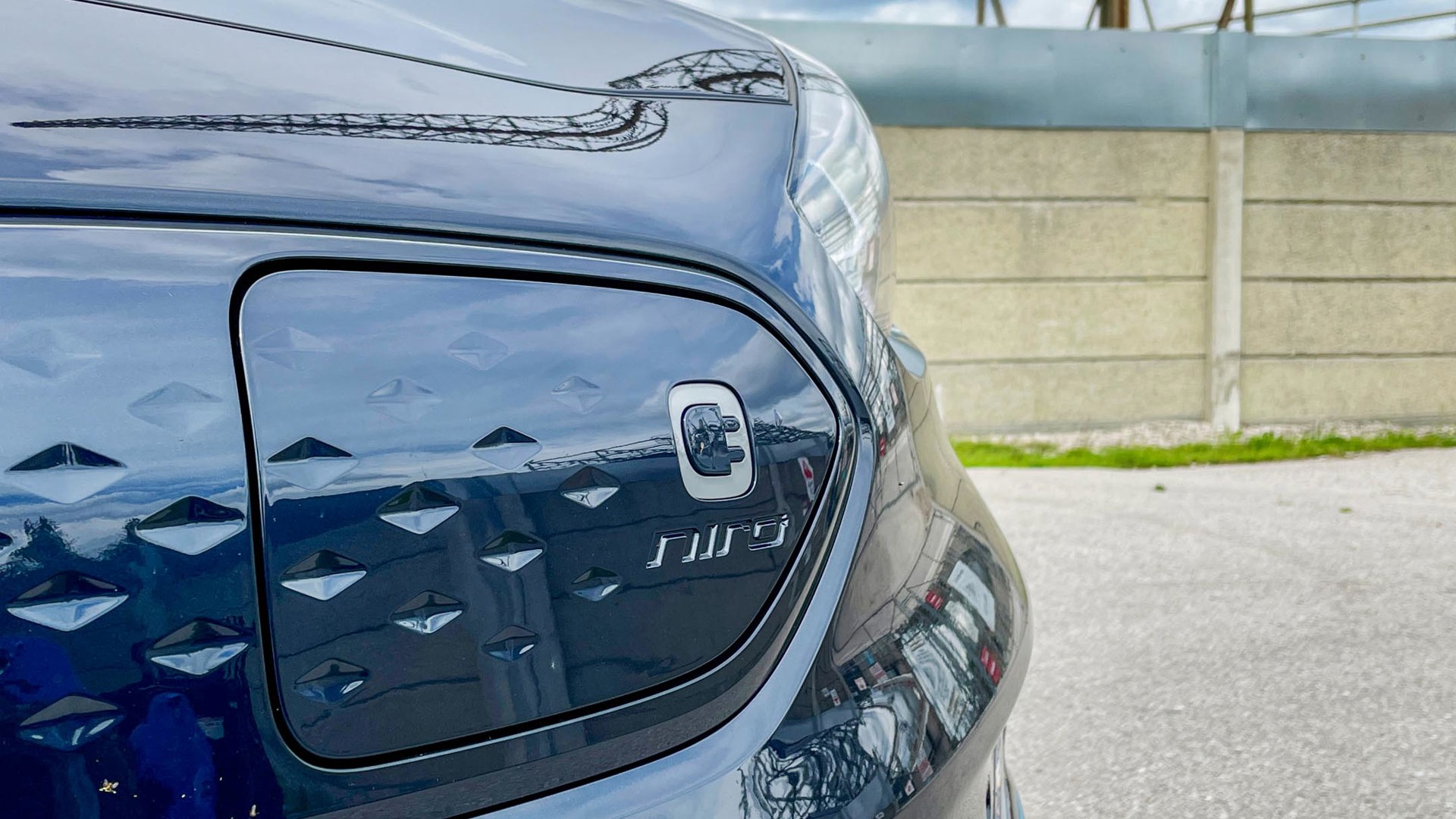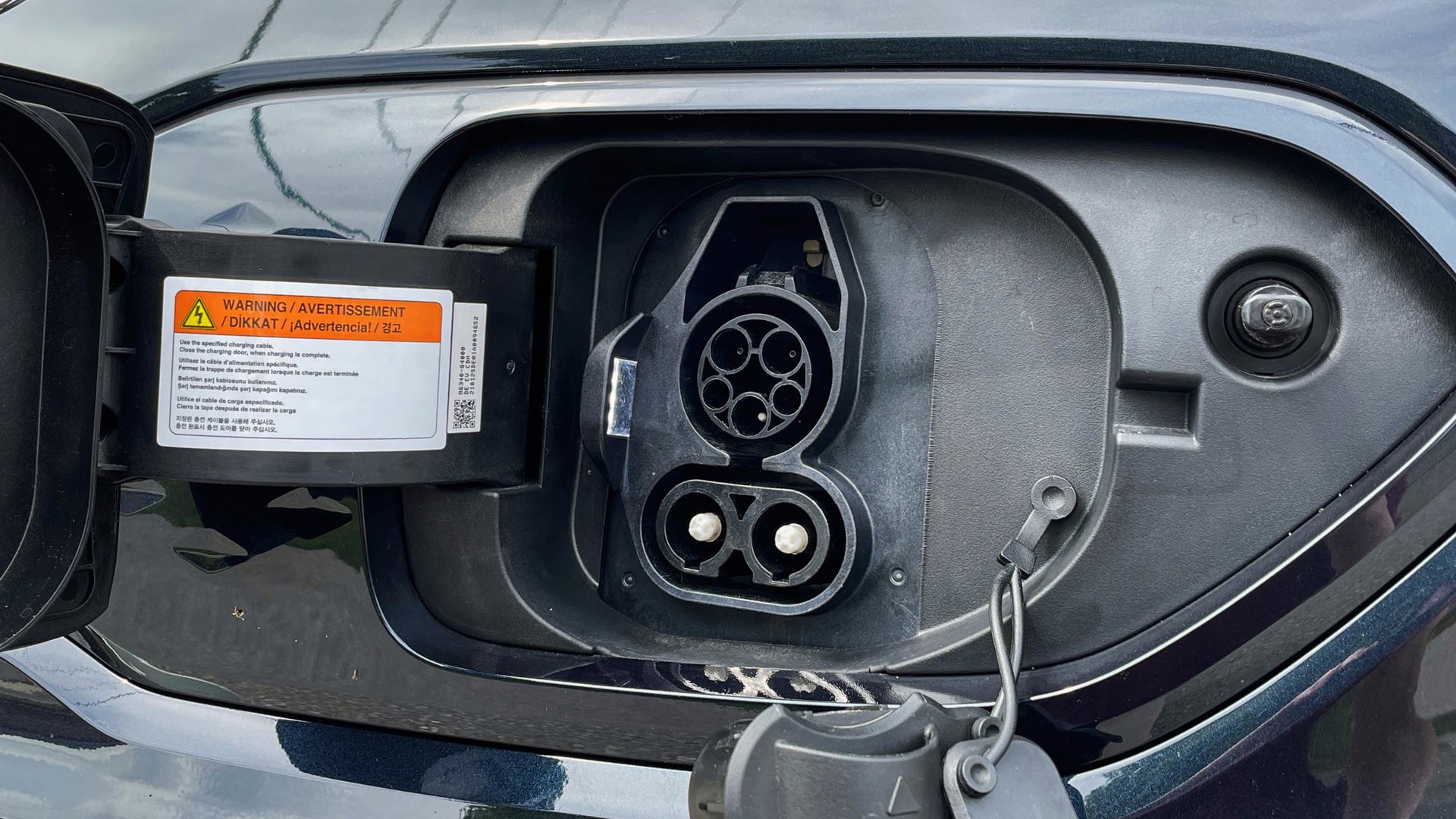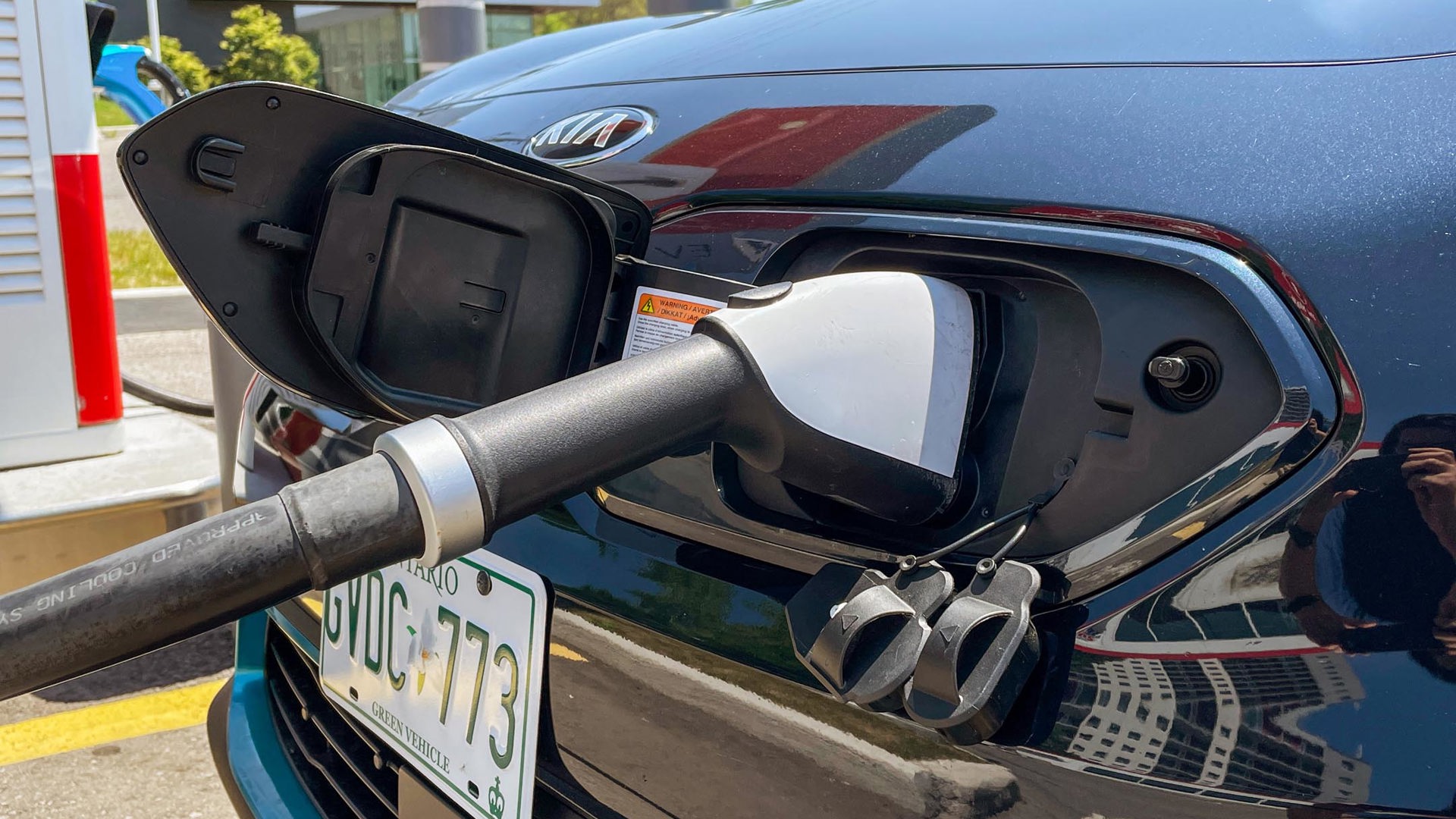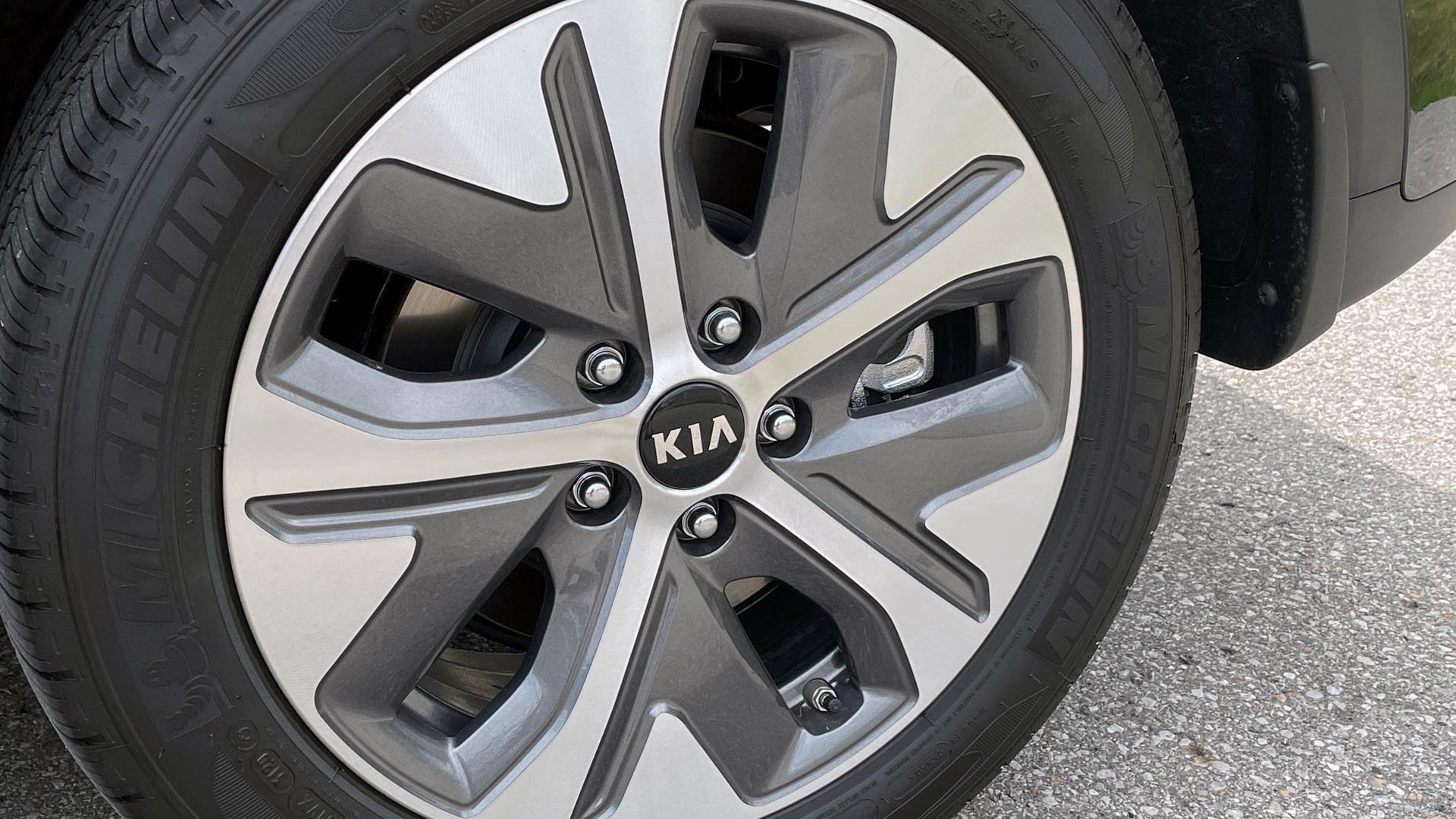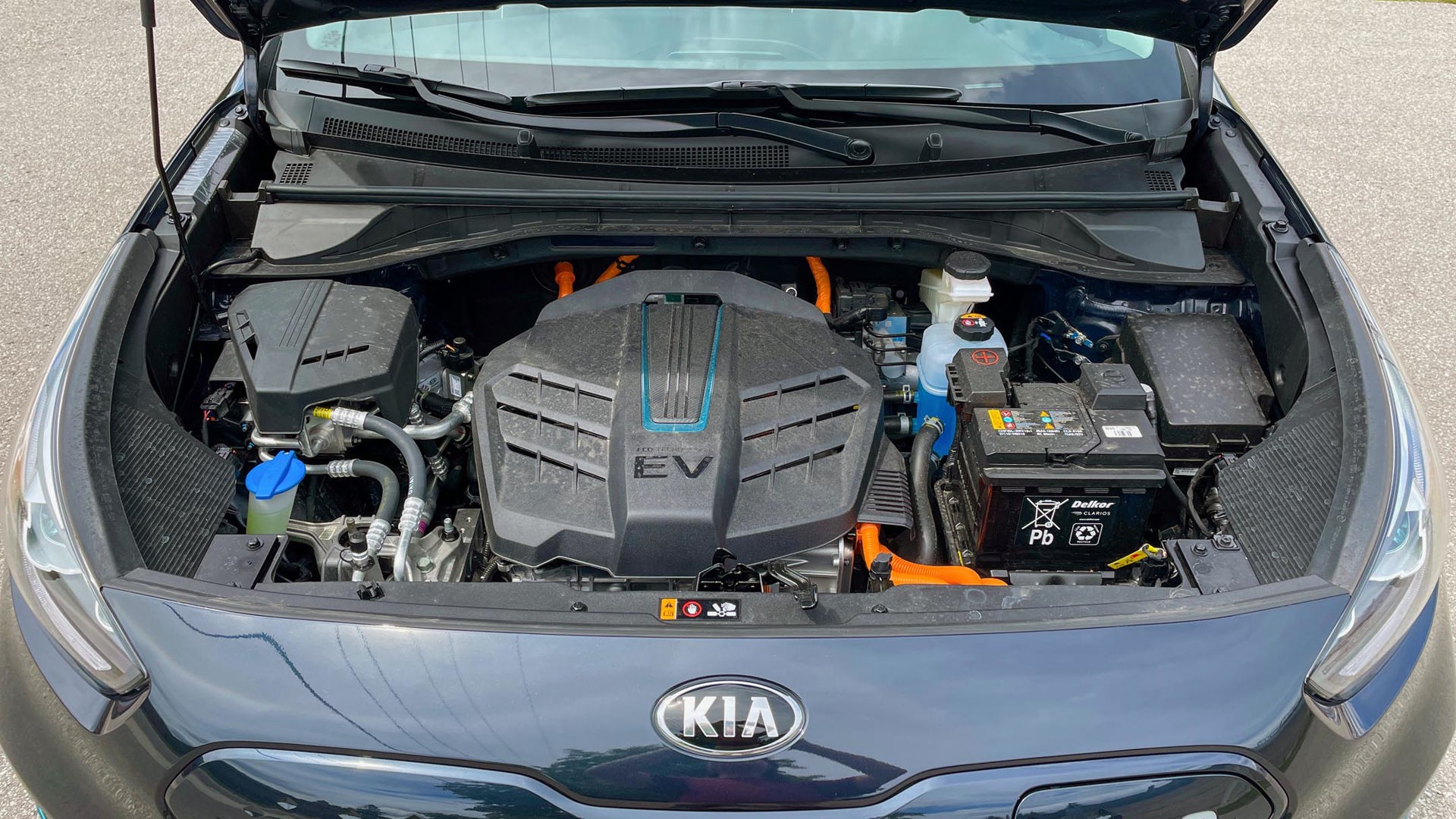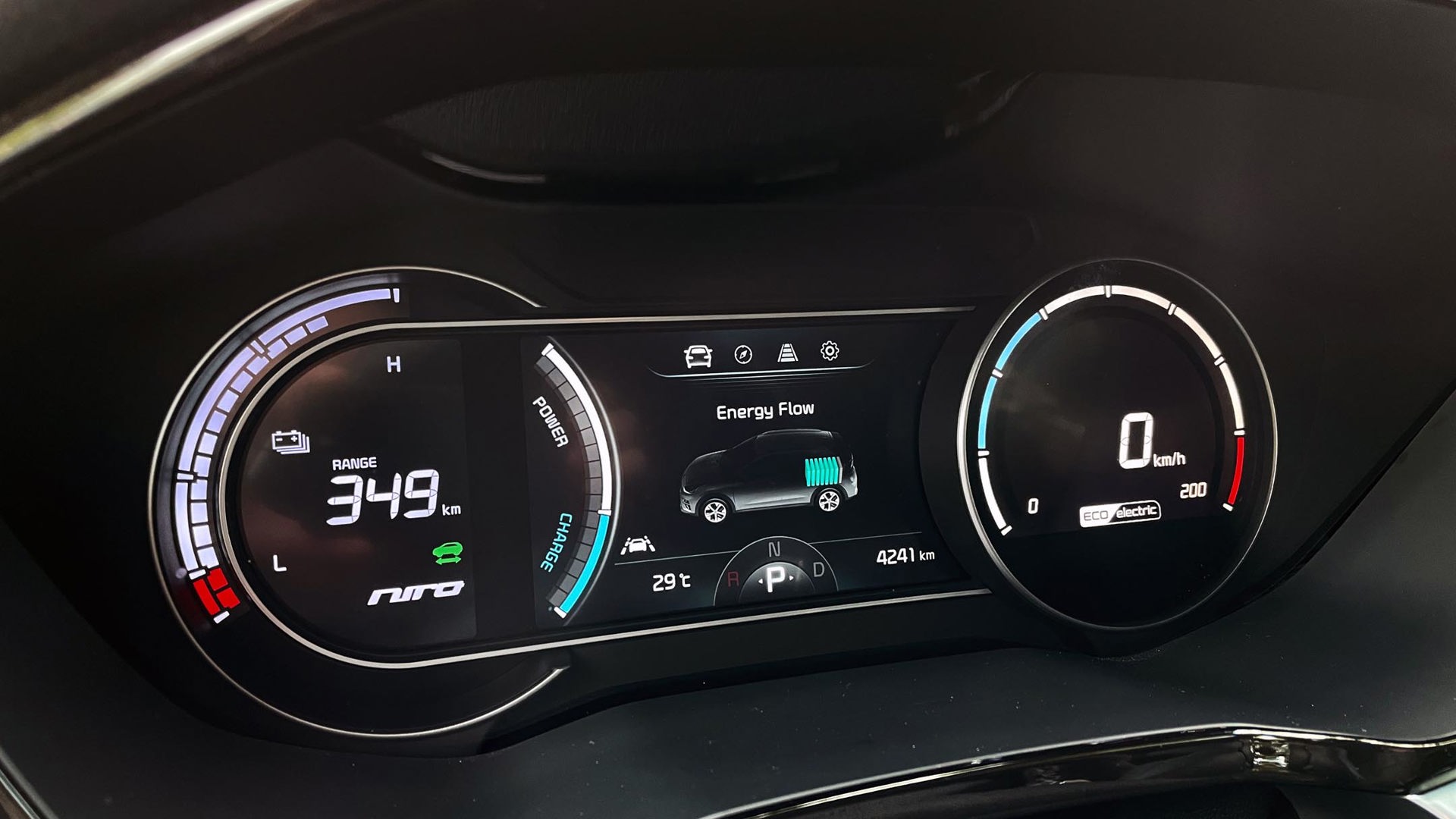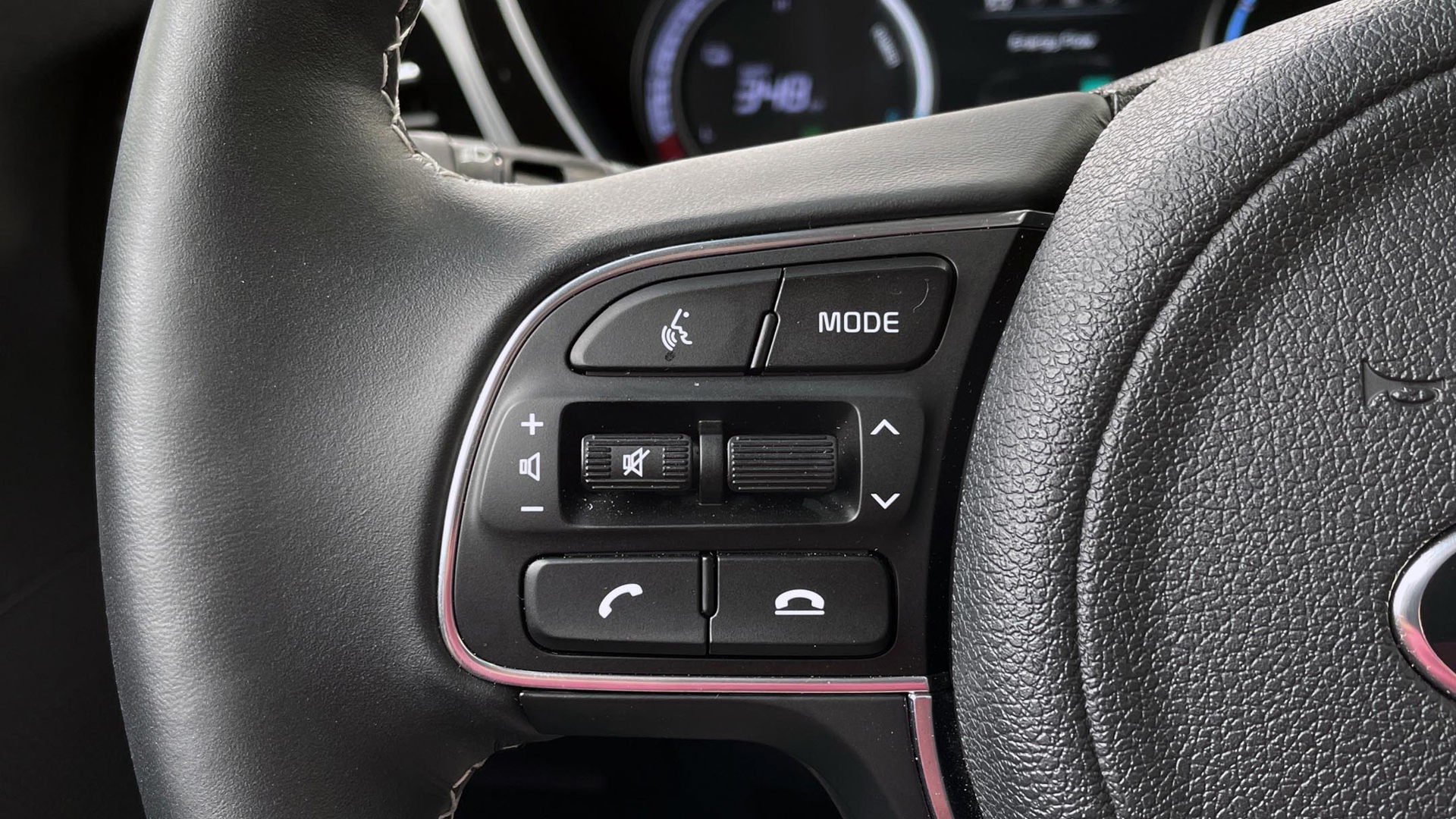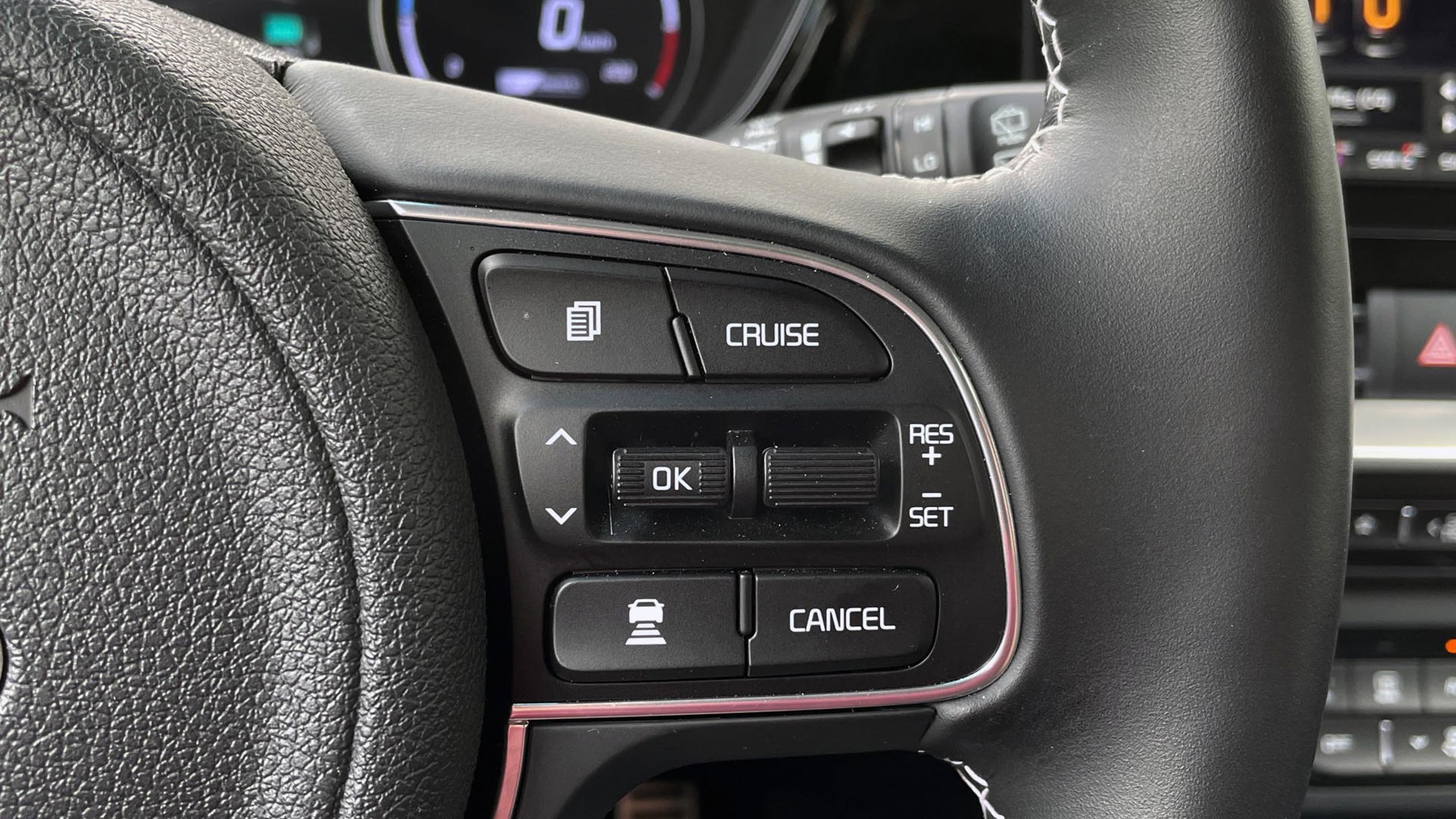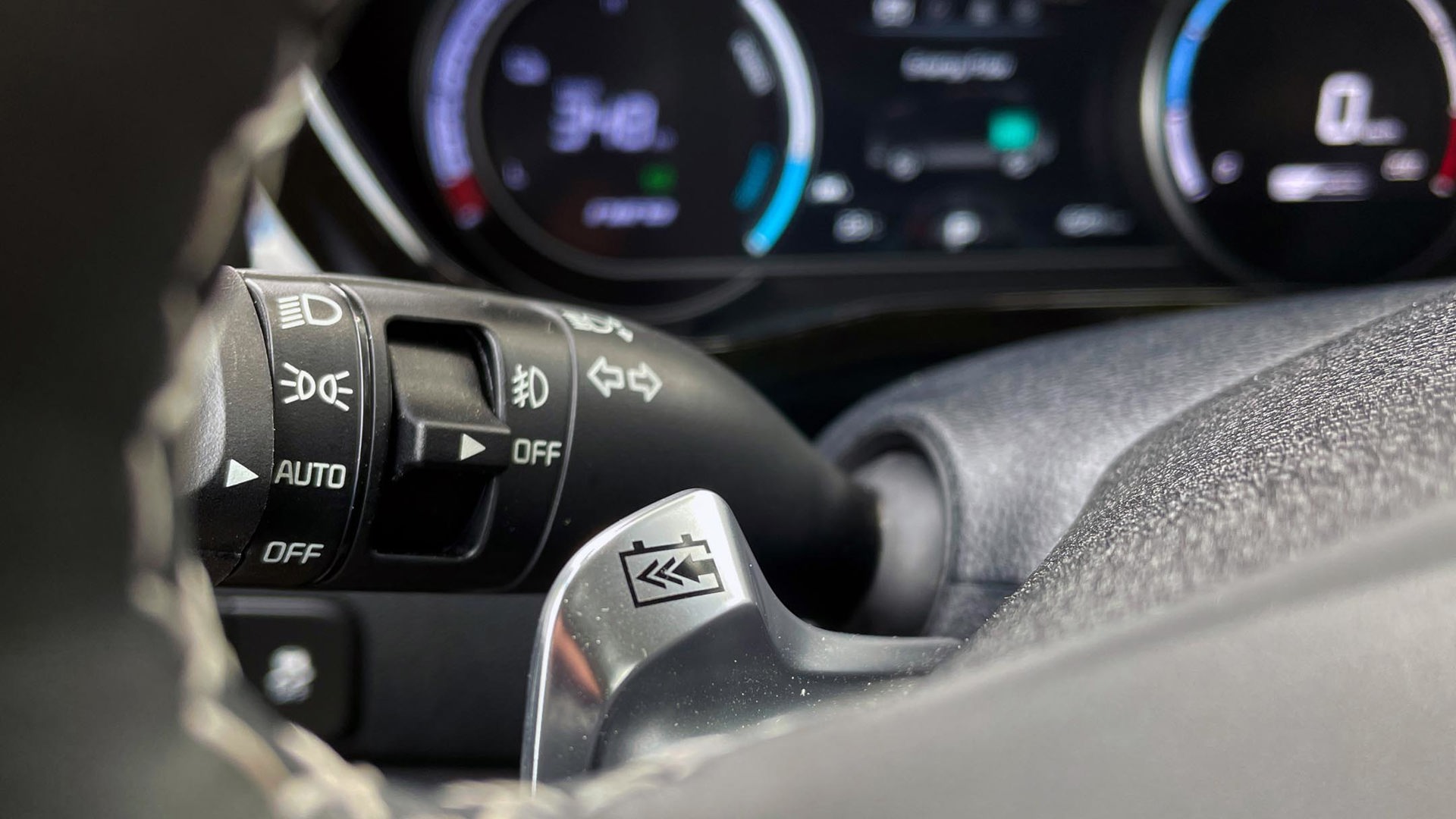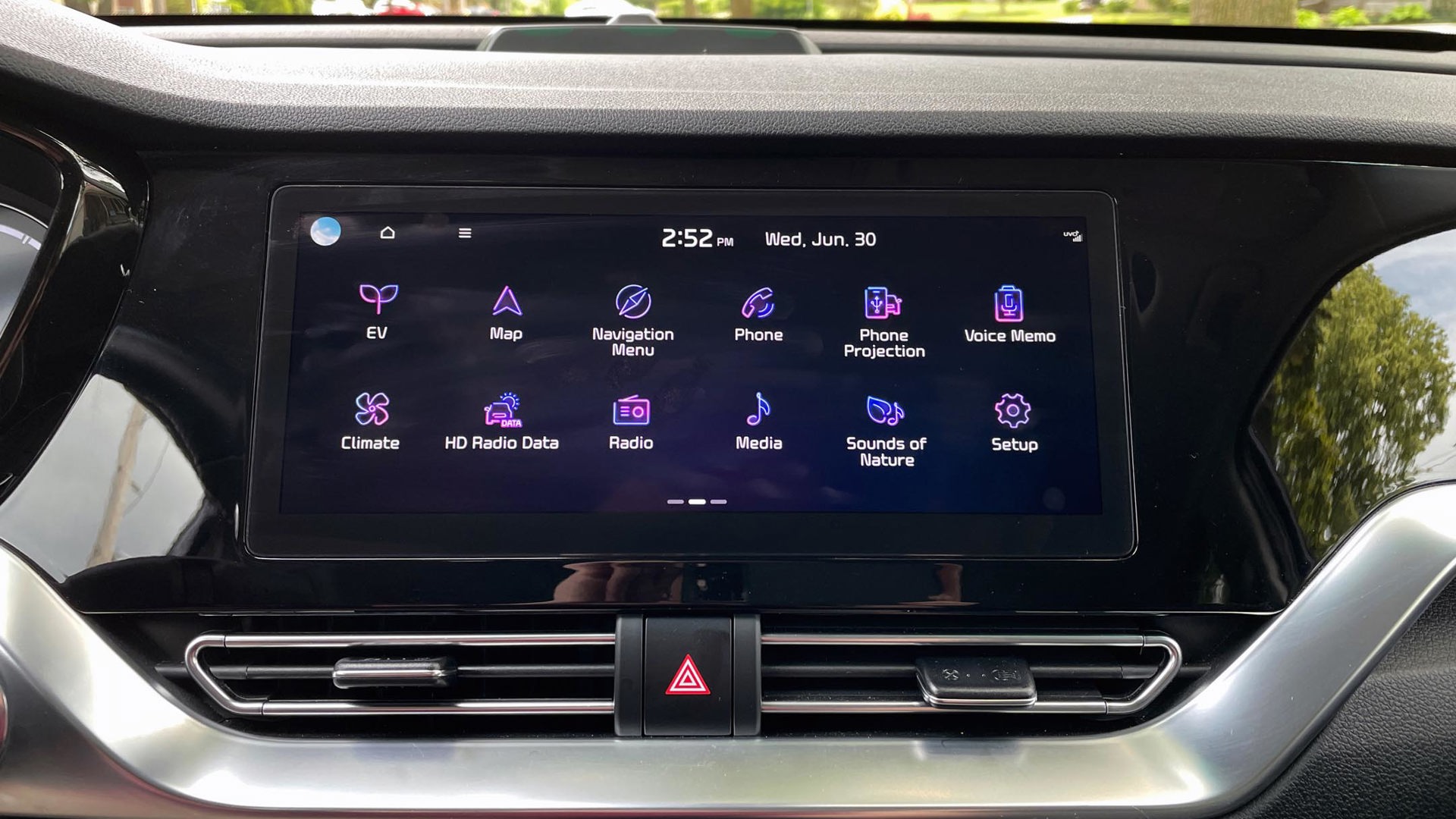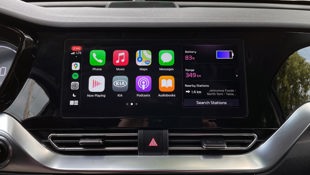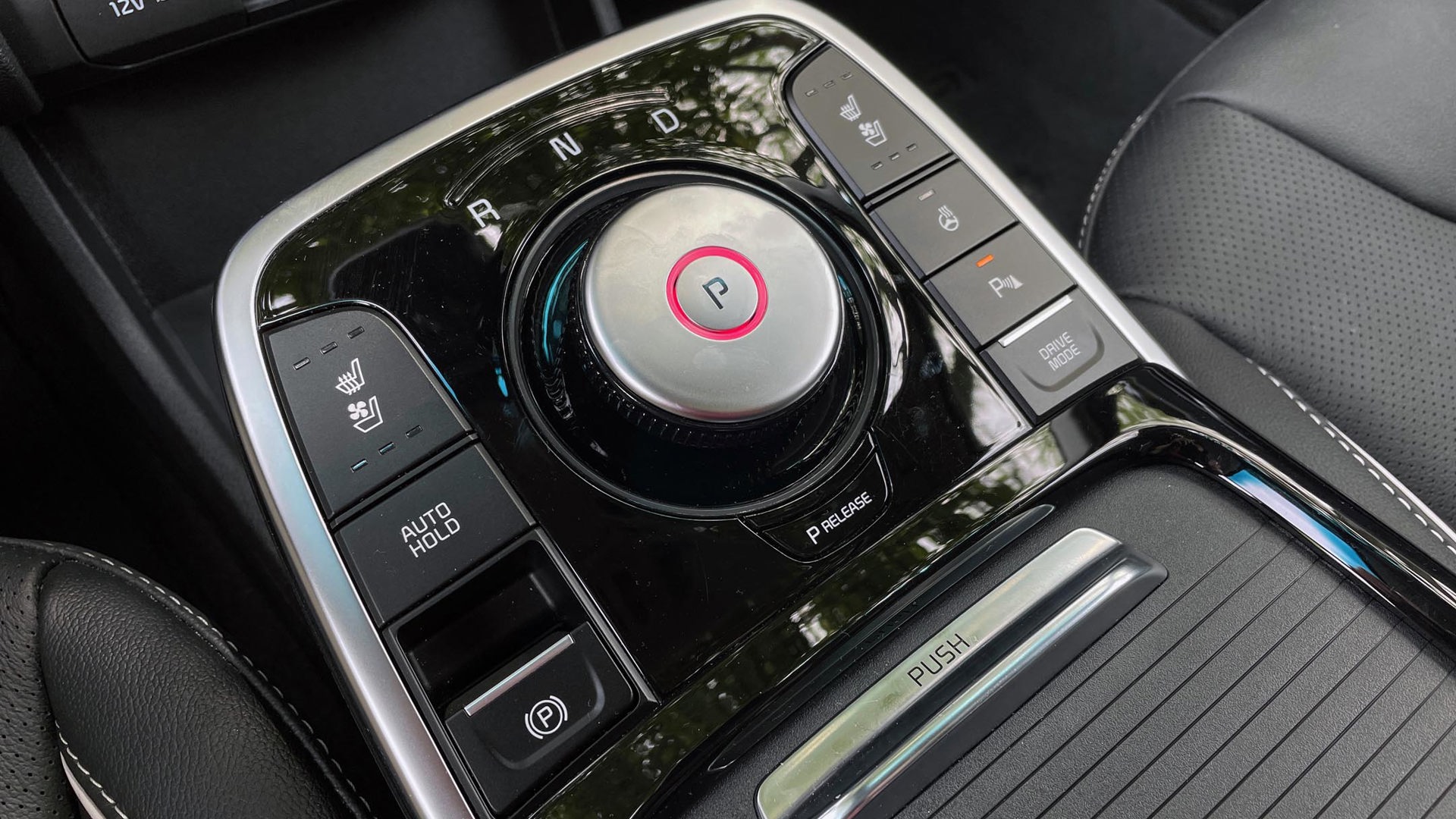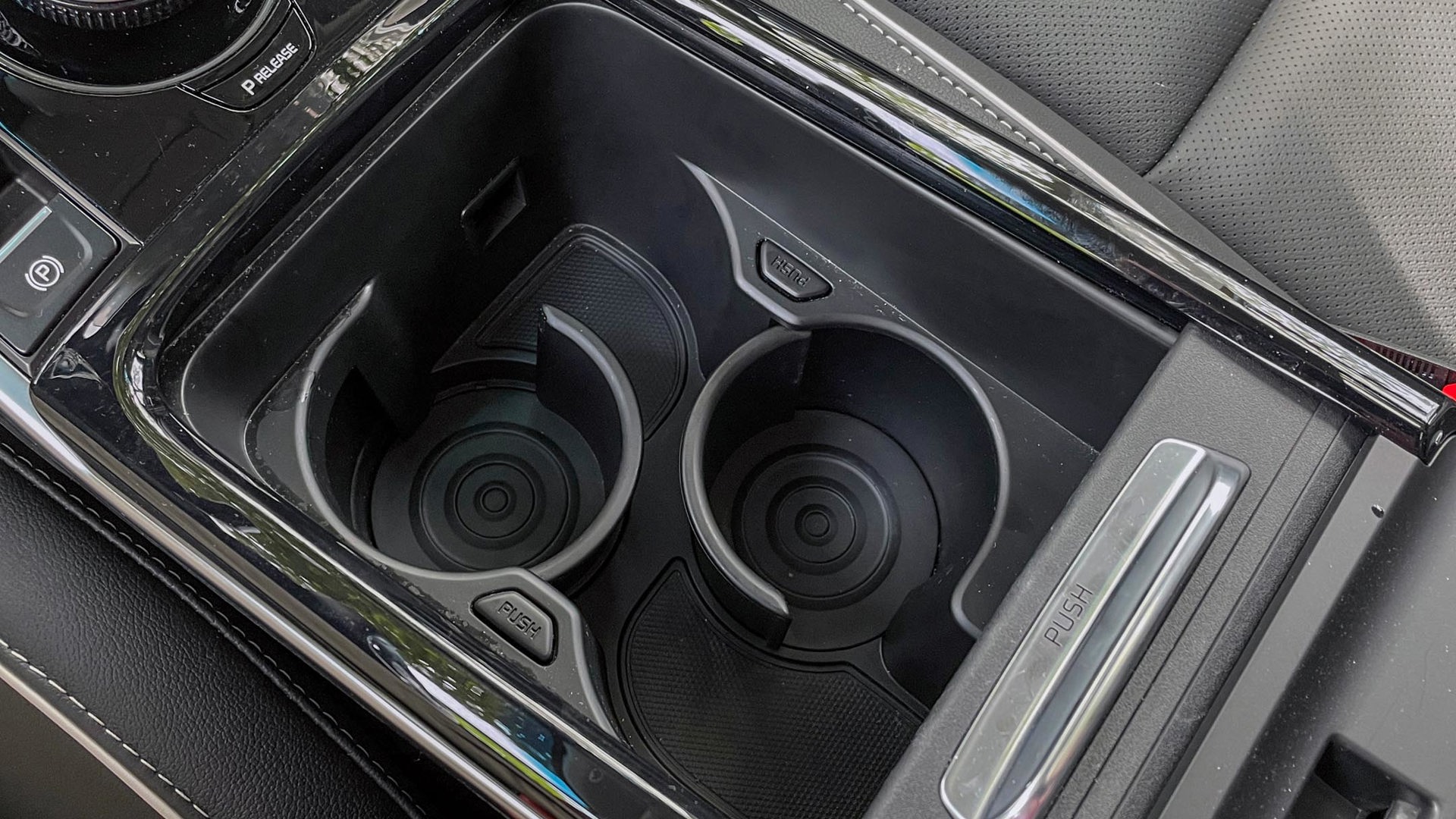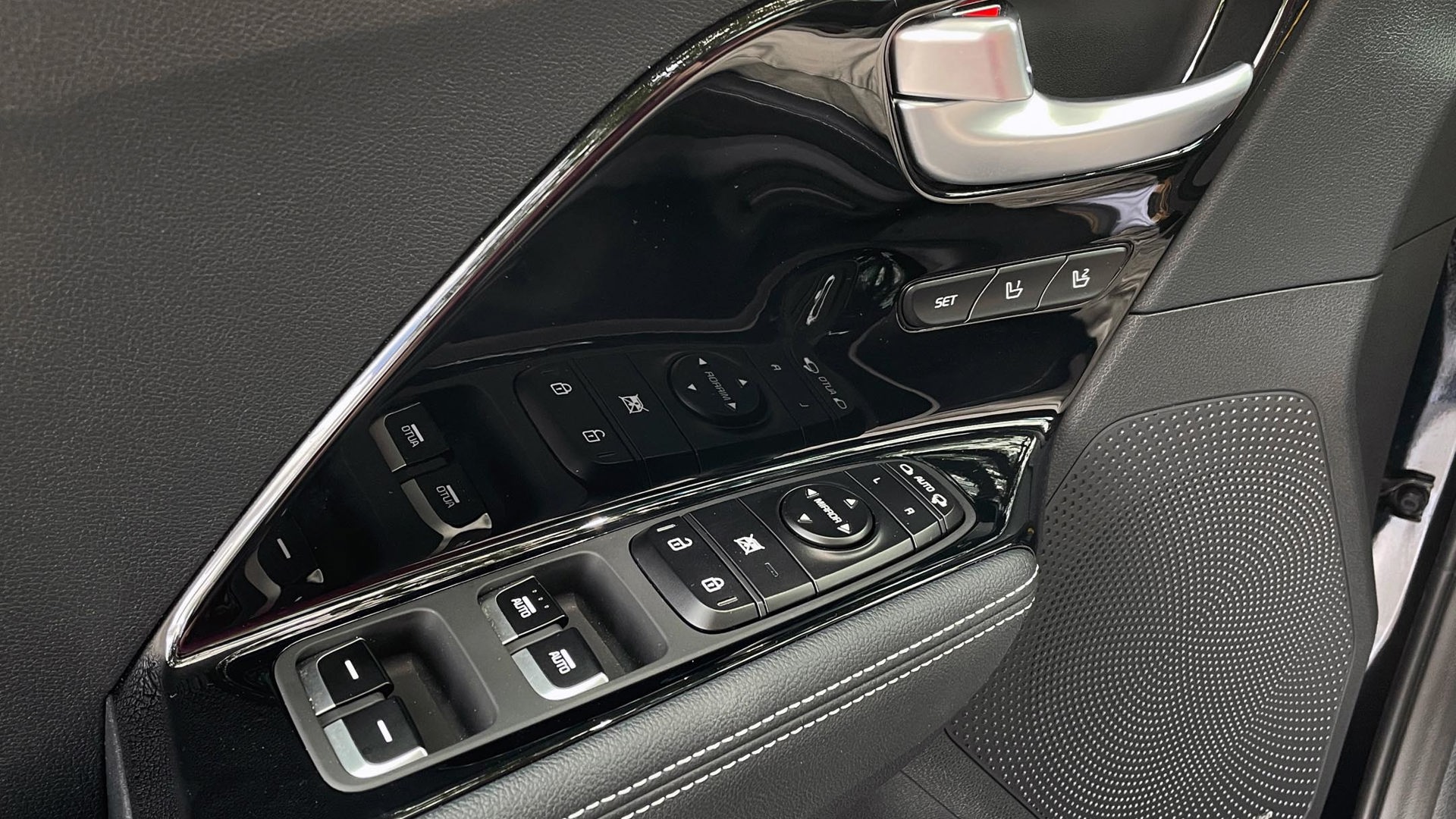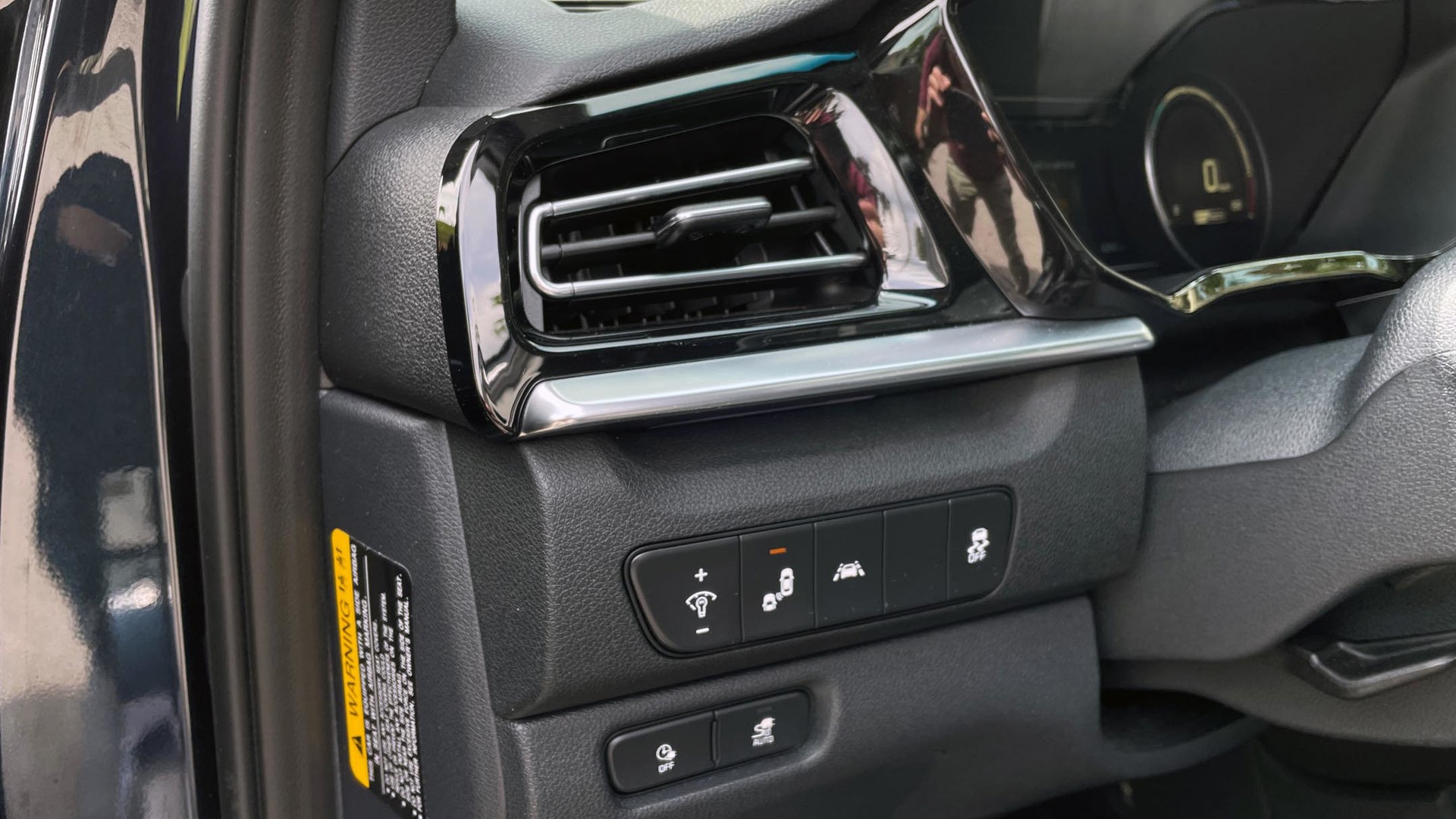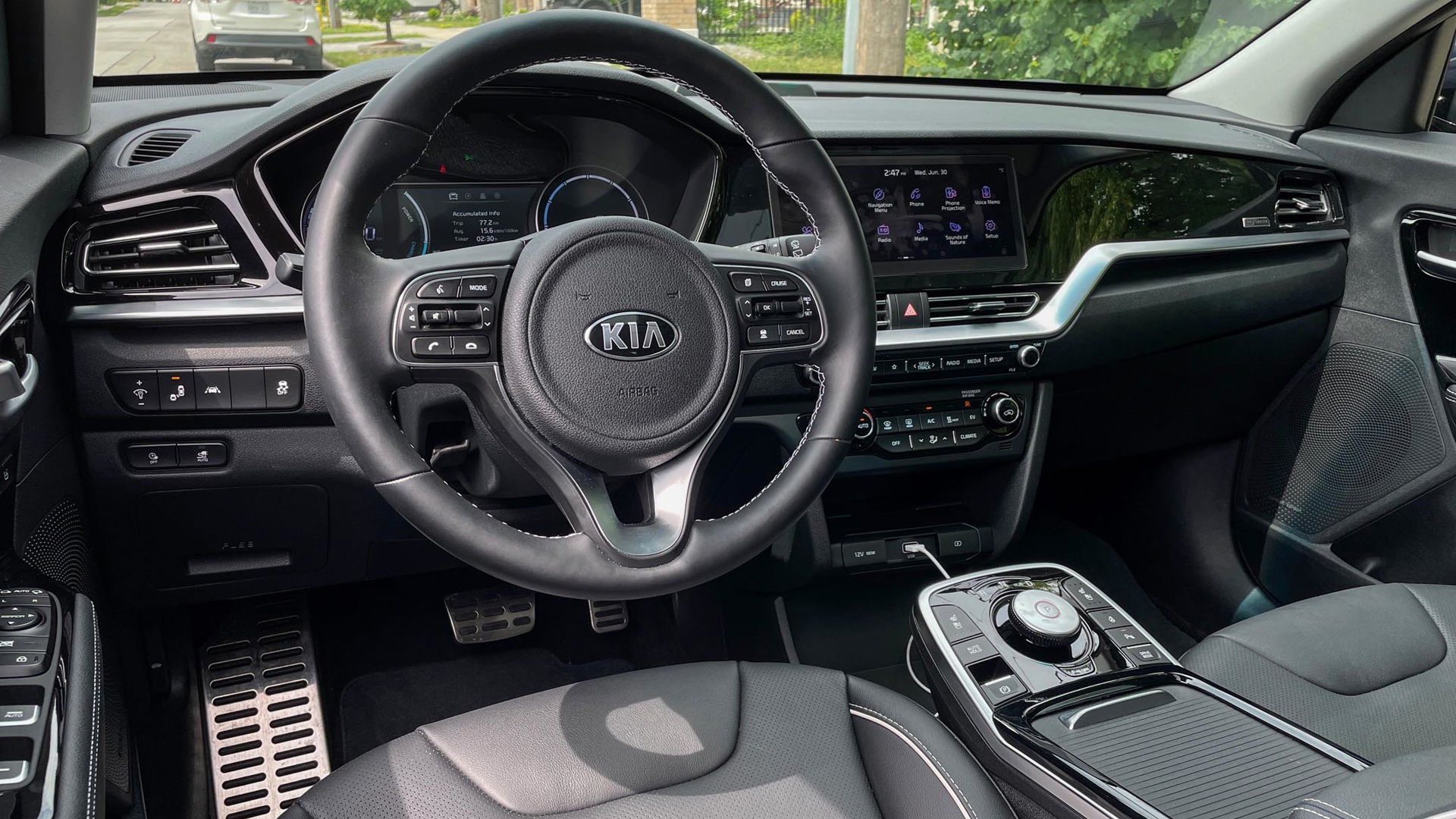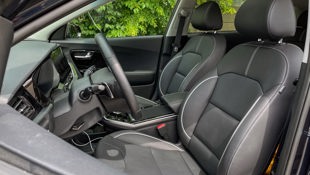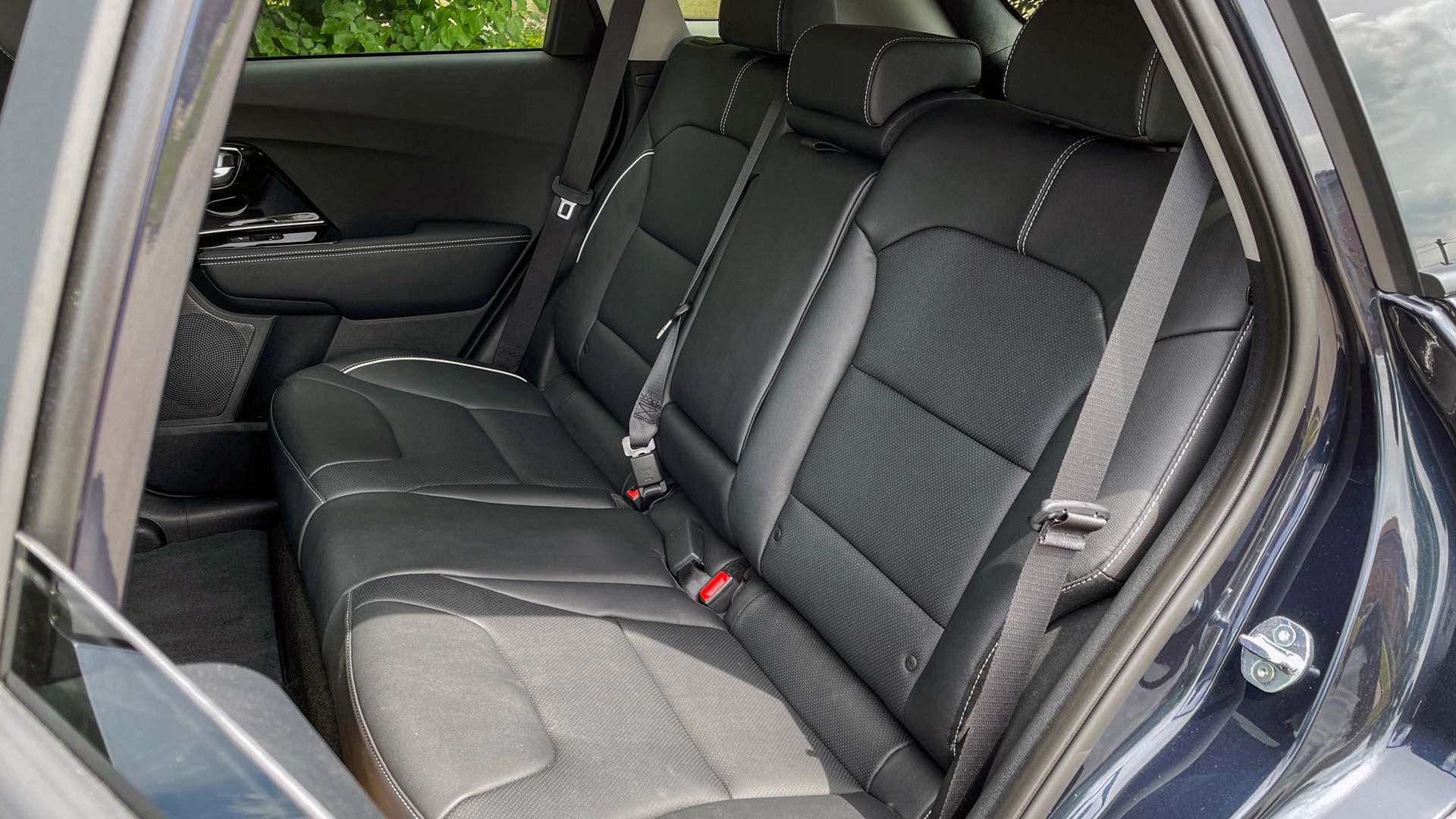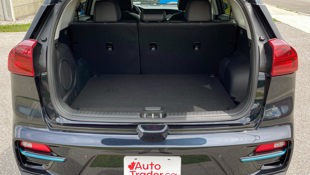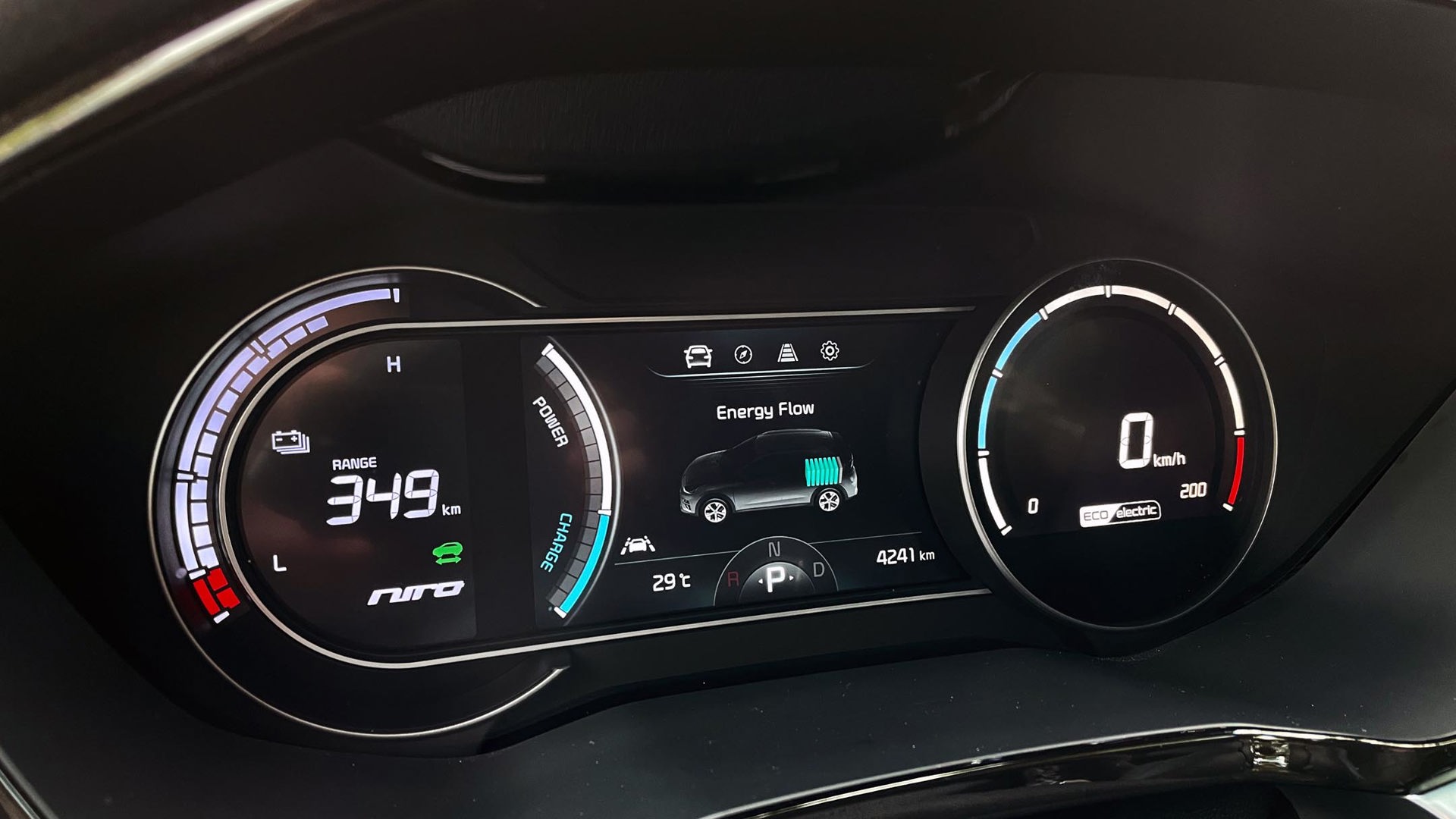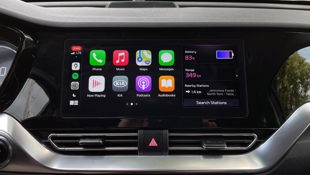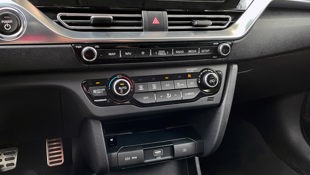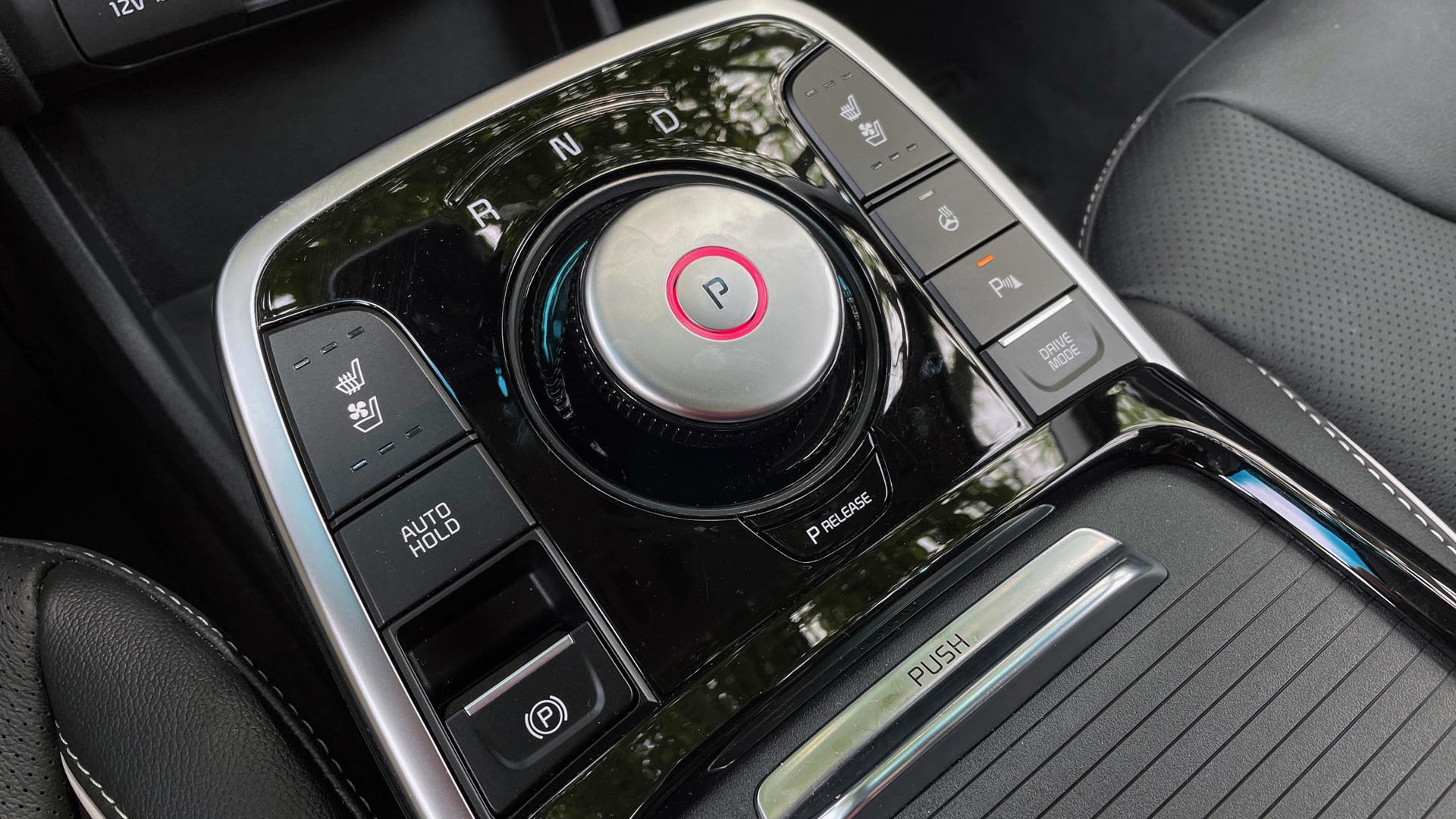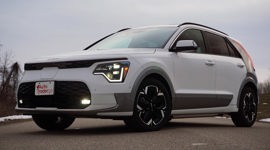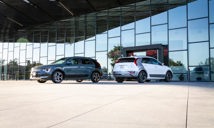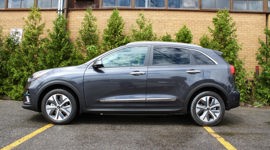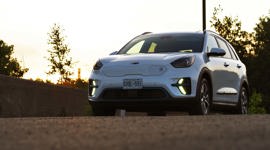 AutoTrader SCORE
AutoTrader SCORE
-
STYLING7/10
-
Safety9/10
-
PRACTICALITY7/10
-
USER-FRIENDLINESS10/10
-
FEATURES8/10
-
POWER9/10
-
COMFORT8/10
-
DRIVING FEEL8/10
-
FUEL ECONOMY9/10
-
VALUE6/10
When it comes to electrified rides, Porsches, Teslas, and Fords may get all the headlines and hype, but Kia – and sister brand Hyundai – have been quietly plugging away at it for a while.
There’s the all-electric version of the Kia Soul, gas-free versions of the Hyundai Ioniq sedan and Kona subcompact crossover, and the 2021 Kia Niro EV.
No, it won’t garner quite as much attention as the shiny new Ford Mustang Mach-E, but the Niro EV is still a solid entry in the ever-growing pool of electric vehicles (EVs) thanks to its usable range, agreeable driving manners, and a decidedly conventional user experience.
Styling: 7/10
On the outside, the Kia Niro is an inoffensive and agreeable-looking machine. Its bread van shape sits higher than a regular hatchback such as the Mazda3 or Kia’s own Forte5, but it isn’t quite as tall or beefy-looking as something like a Honda CR-V or Toyota RAV4 (the latter of which can be had as a plug-in hybrid, by the way). Style-wise, its rounded-yet-angry face reminds me of a Pokémon (grass-type, of course) – an aesthetic that’s only enhanced by this electric-only version’s bright blue accents.
The inside of the Niro is similarly pleasant and simple. It looks like it was designed with functionality in mind above all else, while the upscale-ish air vents, the gloss black dash that’s been embossed with a cool triangle pattern, and stitched leather on this SX Touring version’s seats and armrests give it a sense of class more befitting of its $50,000-plus price tag – although the bright silver trim that runs across the dash is perfectly positioned to annoyingly reflect any overhead sunlight directly into the driver’s eyes.
Fuel Economy: 9/10
Kia advertises the Niro EV’s range at a respectable 385 km, and after a week of mostly solo summertime mixed driving, that official estimate turned out to be on the conservative side. Climbing into the fully charged Niro for the first time, the onboard computer showed 440 km of range. After 227 km of driving, the car had depleted 50 per cent of its battery and indicated 210 km of range remaining. After 382 km of accumulated distance (approaching Kia’s advertised range), the battery still contained 12 per cent juice and 48 km of claimed distance left to give.
For transparency’s sake, most of my driving was done with no passengers and with the air conditioning set to its eco-friendly driver-only mode that directs air only to the left side of the cockpit. In the wintertime, or when regularly ferrying passengers, your range may vary.
The public charging infrastructure for a non-Tesla EV like this is still a long way from where it has to be before electric cars become truly mainstream, so a Level 2 home charger is recommended if you intend to use the all-electric Niro as your primary – or only – car. If you plan to use public chargers, however, Kia’s charge-time claims (i.e. zero to 80 per cent in 54 minutes via DC fast charging) proved to be quite accurate during testing. Plugging the Niro EV into a public station with just 12 per cent charge remaining, the Niro was able to get back up to 80 per cent in precisely 50 minutes at a cost of $16.50. According to the Niro’s onboard computer, it would’ve taken another 29 minutes to recoup the remaining 20 per cent.
User Friendliness: 10/10
Many EVs wow with gargantuan touchscreens and futuristic, minimalist interiors, but Kia has gone the other way, offering the Niro with an interior that’s not all that different to one in a conventional car. And when it comes to usability the Niro is better for it, because making sense of this car’s controls is mostly trivial. All of its buttons, knobs, and switches are easily visible and within reach, although I did find myself cranking up the temperature instead of the music once when I tried to locate the volume knob without looking.
The infotainment system is sharp, responsive, easy to use, and just the right size; not small enough to feel outdated or low-rent, but also not so big as to become distracting or overwhelming. Even the wheel that’s used to switch between drive, reverse, and neutral – perhaps the only non-traditional control in the Niro’s entire cabin – is extremely simple to locate and use eyes-free once you get acquainted with the car.
Practicality: 7.5/10
There’s a reasonably good amount of room in all of the Niro’s seats, while its 629 L of cargo capacity is more than adequate for everyday needs (although it isn’t quite as generous as the Forte5 or Sportage crossover). Front-row storage space is alright, too, with three different zones (a phone cubby, a covered area with cupholders, and a bigger open nook between them) in the centre console, although none of them are quite big enough to fit the largest of backpacks or purses.
Comfort: 8/10
Fitted with comfortable seats and an equally comfortable ride, the Kia Niro manages long drives, rough pavement, and big potholes well. Even when lowered all the way, though, the driver’s seat feels like it sits higher than it should, likely thanks to the battery’s packaging. It’s also not likely to be a problem for drivers of average height who enjoy the higher seating position of a crossover anyway, but taller folks may be left wanting for a little more flexibility.
In this SX Touring model, those front seats are heated and ventilated, the rear seats are heated, and so is the leather-wrapped steering wheel. The climate control system is fully automatic, meanwhile, and includes that driver-only function to reduce energy consumption.
Power: 9/10
In typical EV fashion, acceleration is remarkably prompt and smooth. This notable thrust isn’t relegated to racing between stop lights, either, with impressive high passing abilities as well. If you were to race it, the Niro EV’s 201 hp and 291 lb-ft of torque would likely put it in the same league as most gas-powered hot hatches. No, the speed on tap here isn’t quite as Ludicrous, Unbridled, or Sport Plus as some of those other EVs; but if you’re considering this Kia as your first electric car, the immediacy with which the Niro responds to pokes of the throttle will still be a fun novelty for quite a while.
Driving Feel: 8/10
The Kia Niro isn’t really the sort of car you buy to enjoy approaching the limits of grip around a twisting backroad – and, after having driven it, I still wouldn’t recommend anyone do so – but it’s a surprisingly decent handler for what it is. Steering is responsive and reasonably quick. Its low centre of gravity afforded by that heavy, low-mounted battery allows for fairly high cornering speeds, but aggressive driving is often accompanied by quite a bit of body roll. Also, the layout, weight distribution, and, in turn, the physics behind an EV are inherently different to a conventional gas car and, as a result, chassis movements always feel a tad unnatural.
The brakes, which regenerate energy as they’re used, are easy and reassuring to use although using them in tandem with the paddle-operated friction brakes smoothly takes a little getting used to. Highway cruising is steady and fuss-free.
Safety: 9/10
If you’d rather the car do as much highway driving for you as possible, the Niro isn’t bad at that either. Like most other cars from the Korean car conglomerate that is Hyundai/Genesis/Kia, the Niro’s advanced driver assistance systems (ADAS) such as adaptive cruise control and lane-following assist are more capable than average, and the Niro was able to negotiate a significant stretch of Toronto’s Gardiner Expressway with minimal driver input.
The Niro also features forward collision avoidance assist, front and rear parking sensors, and blind-spot monitoring with rear cross-traffic alert, although we should note that these technologies only come with this SX Touring trim and are not available on the lower EX+ or base EX, which both get a government-mandated back-up camera and not much else.
This being an EV, it makes a futuristic whirring sound while crawling around at low speeds and repeatedly bongs when reversing to warn pedestrians of its presence.
Features: 8/10
In addition to the ADAS tech, the Niro SX Touring comes with quite a few bells and whistles. These include a 10.25-inch infotainment touchscreen that supports Apple CarPlay and Android Auto (EX and EX+ make do with an eight-inch display), a stereo system that sounds quite good, wireless charging, an auto-dimming rearview mirror, some subtle ambient interior lighting, leather upholstery, and a sunroof, as well as LED head- and taillights. The driver’s seat is power adjustable, while the front passenger makes do with manual controls.
Choosing this top Niro also adds appreciated but less critical touches like chrome door handles and door mouldings, splash guards, alloy pedals, a cargo privacy cover, luggage net, and glossy interior trim. Automatic rain-sensing wipers and a head-up display, however, are noticeably absent from the Niro EV’s feature set.
Value: 6/10
As of this writing, the federal government incentive for purchasing (or taking on a 48-month lease on) a 2021 Niro EV is $5,000. There are also provincial incentives offered in British Columbia, Quebec, and Prince Edward Island.
The Niro EV range is separated into three available trims: the EX, EX+, and the top SX Touring being tested here – all of which share the same powertrain and battery size but differ when it comes to creature comforts and tech. The bottom-trim EX starts at $44,995 (before rebates), while the $50,695 EX+ adds heated front seats, a heated and leather-wrapped steering wheel, as well as a battery heating system and a heat pump that apparently helps with low-temperature range. The SX Touring, meanwhile, starts at $54,695 and, considering the many features and ADAS suites along with the fact that it’s only $4,000 more than the EX+, seems like the one to swing for.
As tested, then, this particular Kia Niro EV came out to be $56,840 after destination, A/C tax, and a $250 colour charge that comes with any Niro EV that isn’t black. For comparison, that’s more than the Tesla Model 3 Standard Range Plus or the top-trim Nissan Leaf Plus, both sedans which cost a little less than $53,000 pre-incentives. It’s also about the same price as a Hyundai Kona Electric Ultimate.
Of course, those willing to stick with (or go back to, depending on your situation) internal combustion can have a way bigger and way nicer car for the money. In fact, $54,695 also happens to be the starting price for a top SX Limited version of Kia’s own big, bad Telluride SUV. And, in terms of size and luxury, that’s way more car than the Niro. For those whose definition of luxury is speed and athleticism, you could alternatively save a couple grand by opting for a Stinger GT Limited sports sedan which “only” costs $50,495. That full-electric powertrain still commands a fairly hefty premium in the car-buying equation.
The Verdict
If an all-electric car that retains most of the general aesthetics and user experience of a regular gas car is what you’re after, the 2021 Kia Niro EV is a more than decent choice. Its impressive range of 400 km or more should keep range anxiety well at bay. It’s also not a bad car to drive and, in this SX Touring trim, pretty well equipped.
The Kia Niro is also comfortable, reasonably spacious, and dead easy to use and live with. In fact, other than the satisfyingly quiet and smooth powertrain, it mostly feels like a normal car. And as the past year or so has shown us, sometimes “back to normal” is all anybody really wants.
| Engine Displacement | 150 kW |
|---|---|
| Engine Cylinders | 64 kWh battery |
| Peak Horsepower | 201 hp |
| Peak Torque | 291 lb-ft |
| Fuel Economy | 1.9 / 2.3 / 2.1 Le/100 km, 17.0 / 20.6 / 18.6 kWh/100 km cty/hwy/cmb; 385 km est. range |
| Cargo Space | 629 / 1,804 L seats down |
| Model Tested | 2021 Kia Niro EV SX Touring |
| Base Price | $54,695 |
| A/C Tax | $100 |
| Destination Fee | $1,795 |
| Price as Tested | $56,840 |
|
Optional Equipment
$250 – Gravity Blue, $250
|
|
